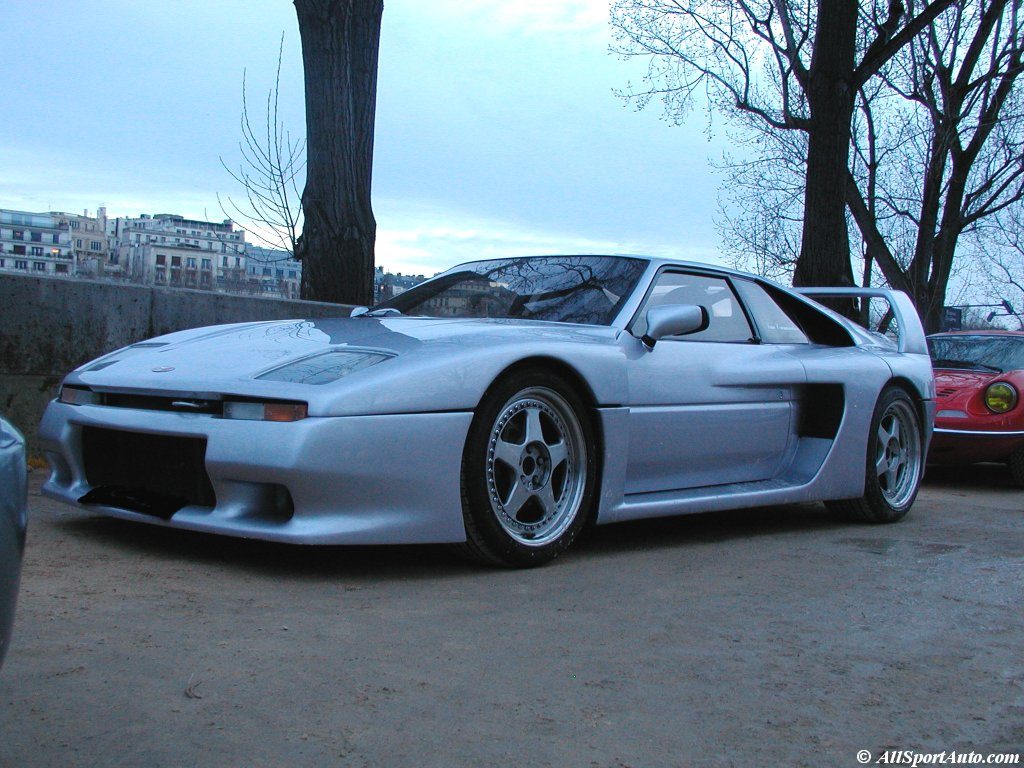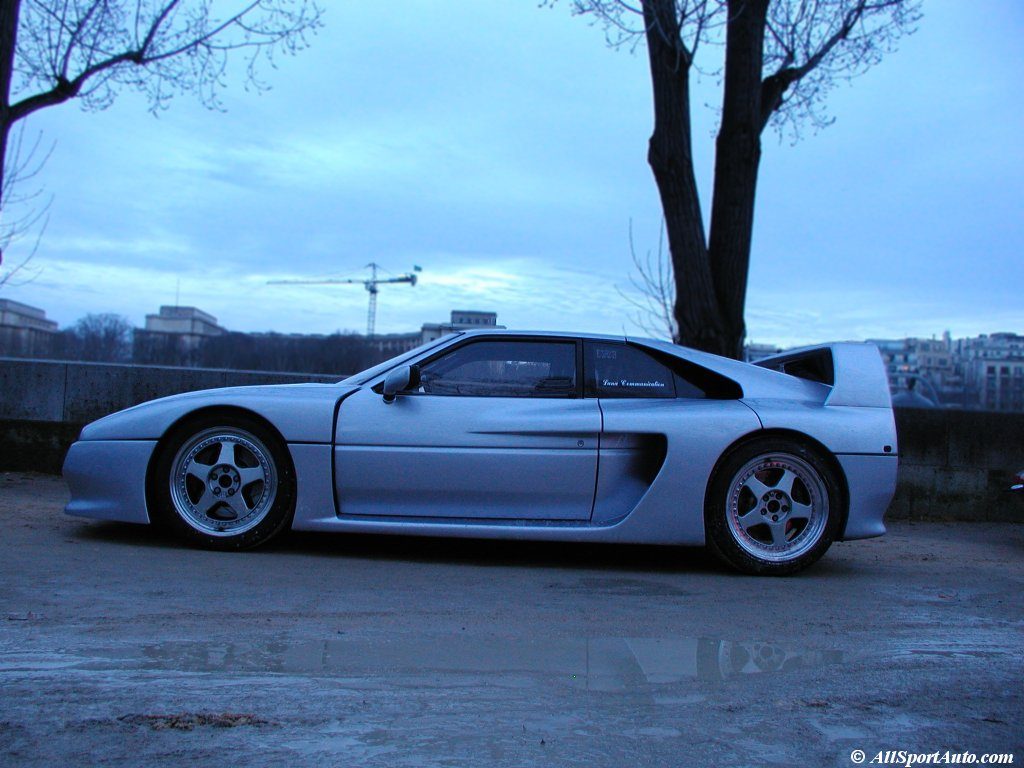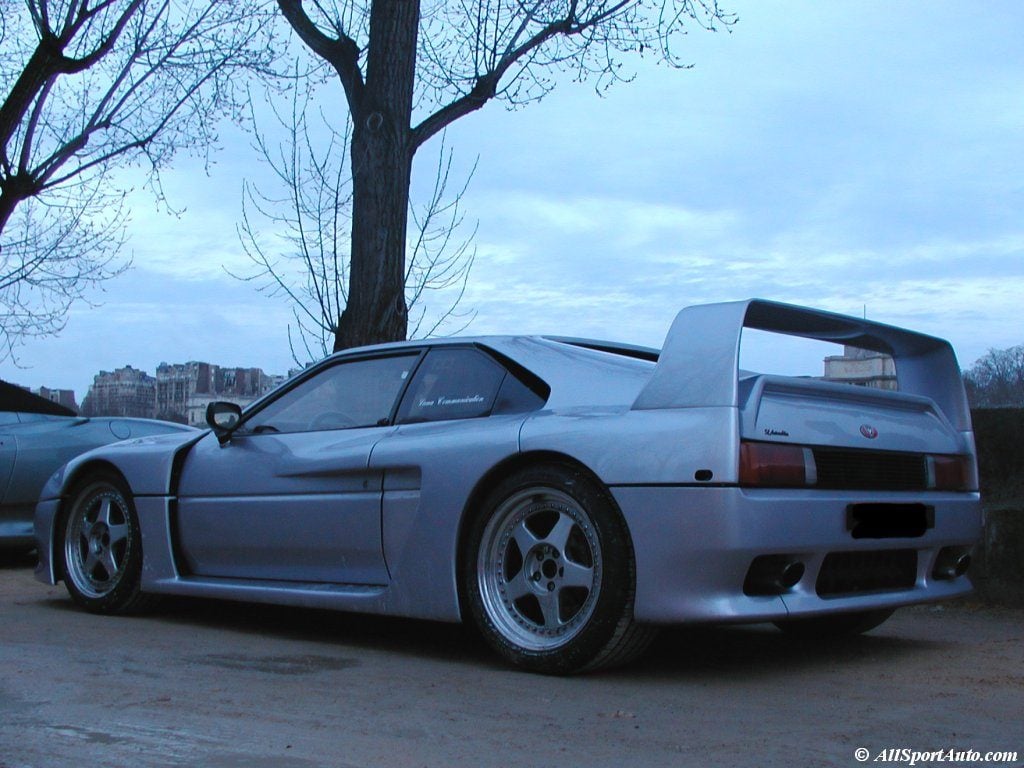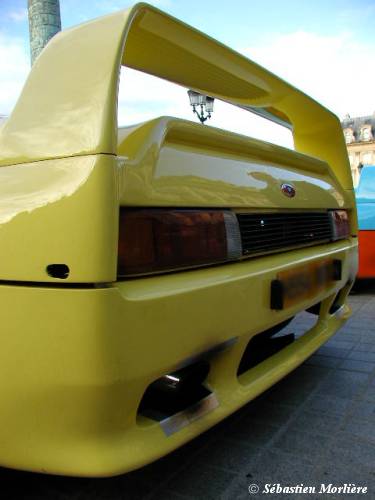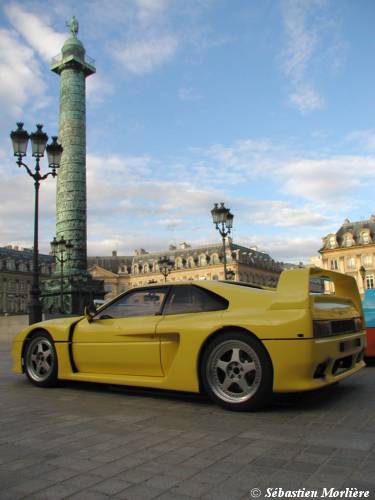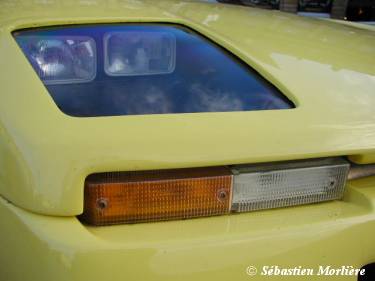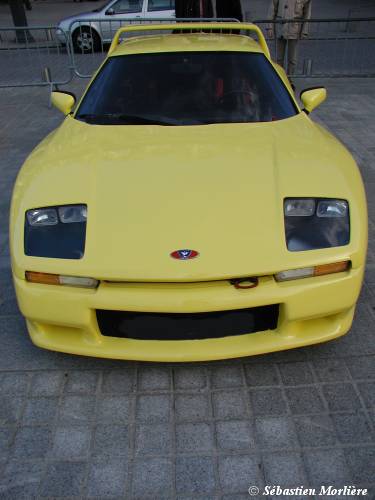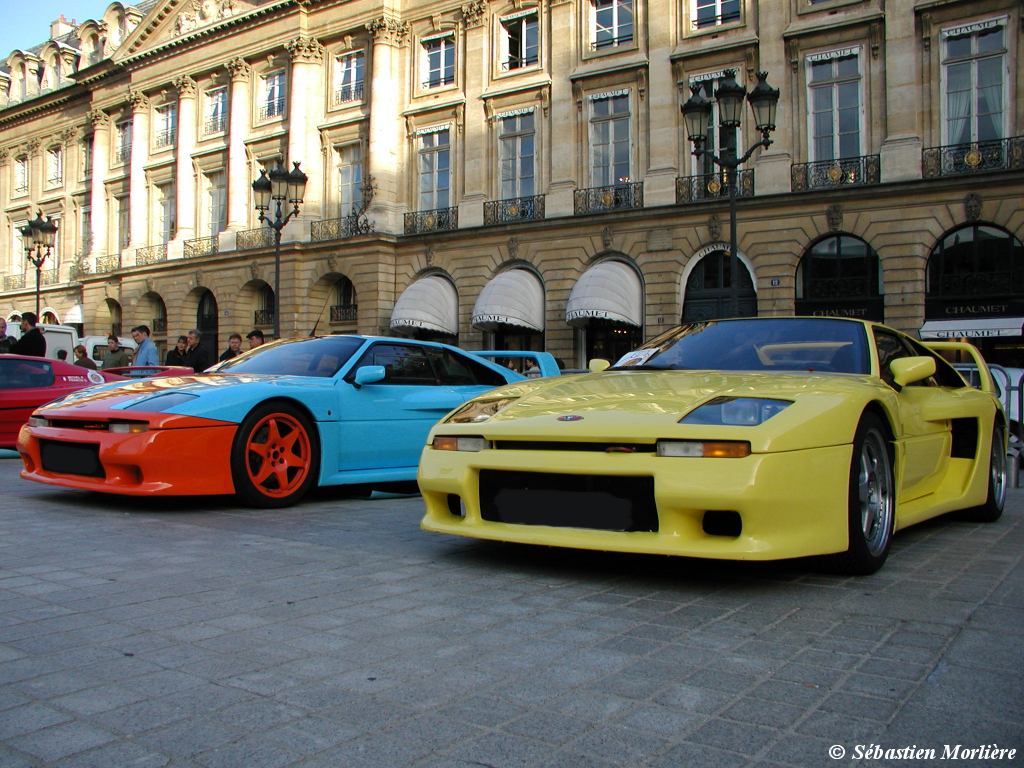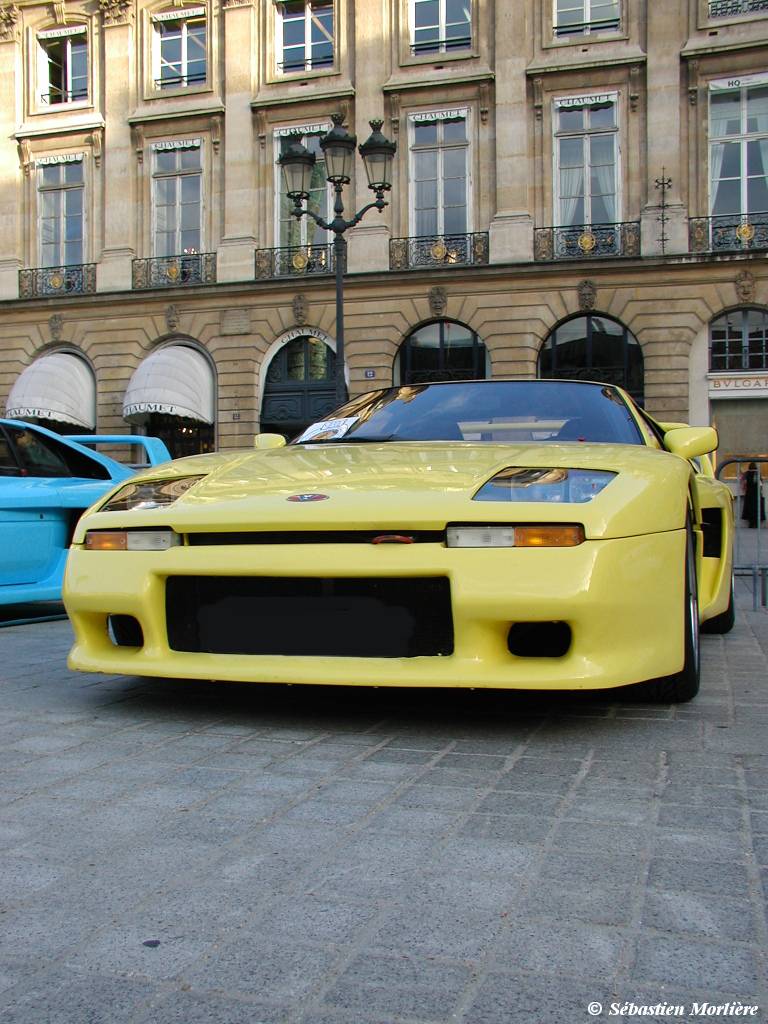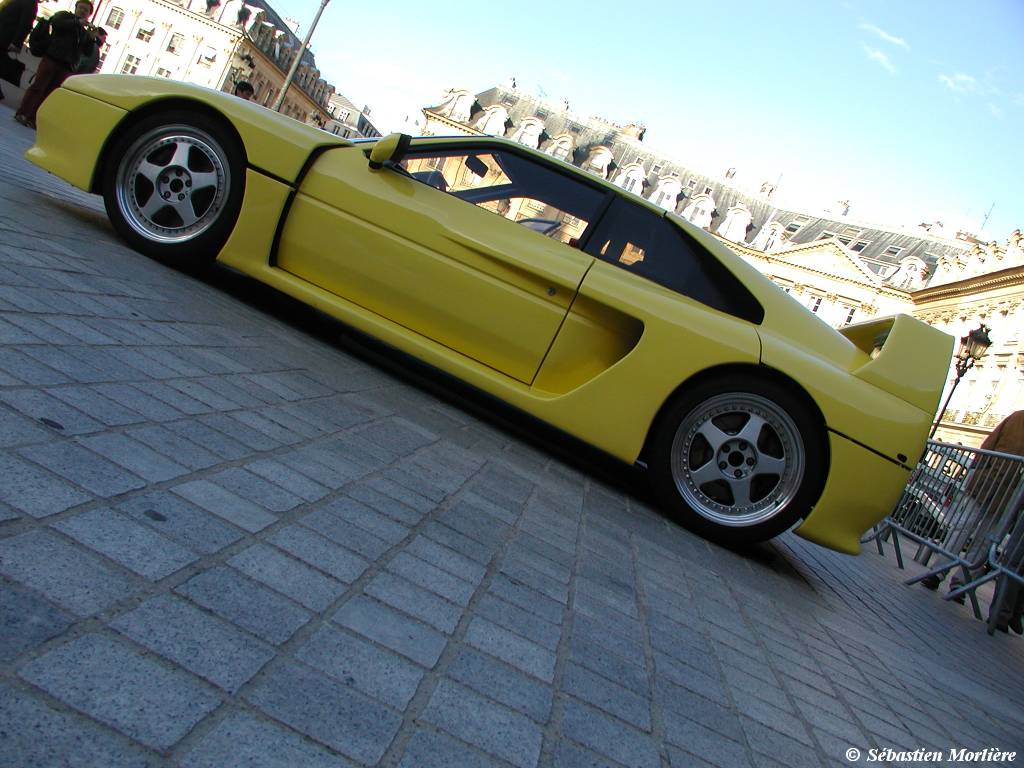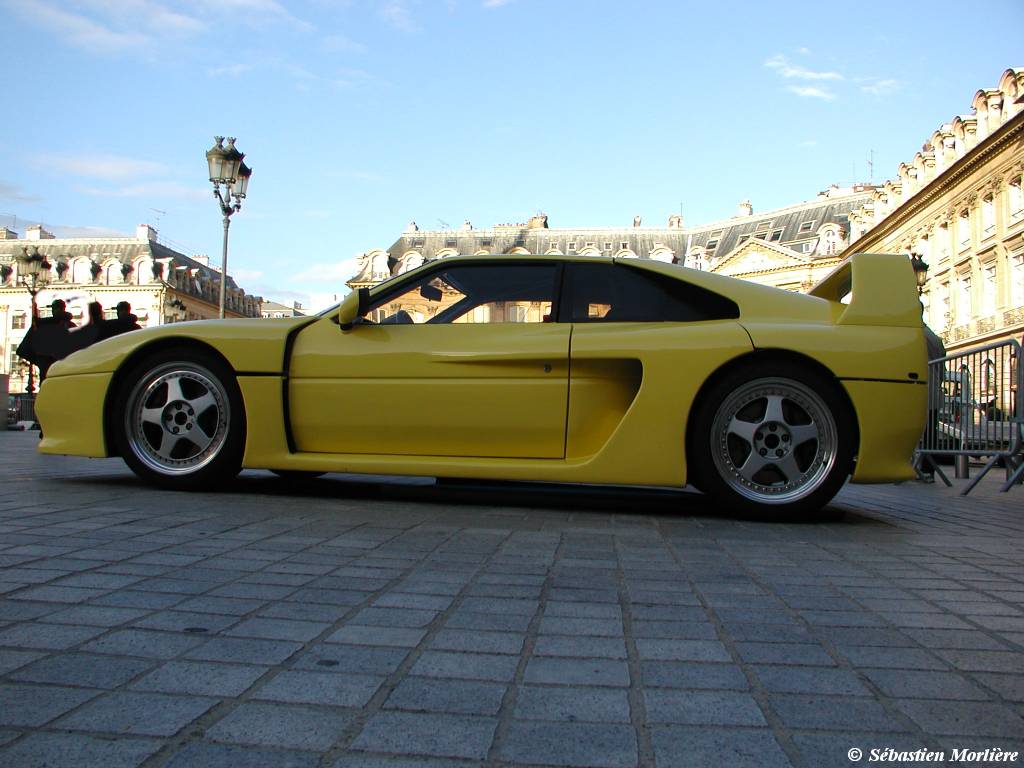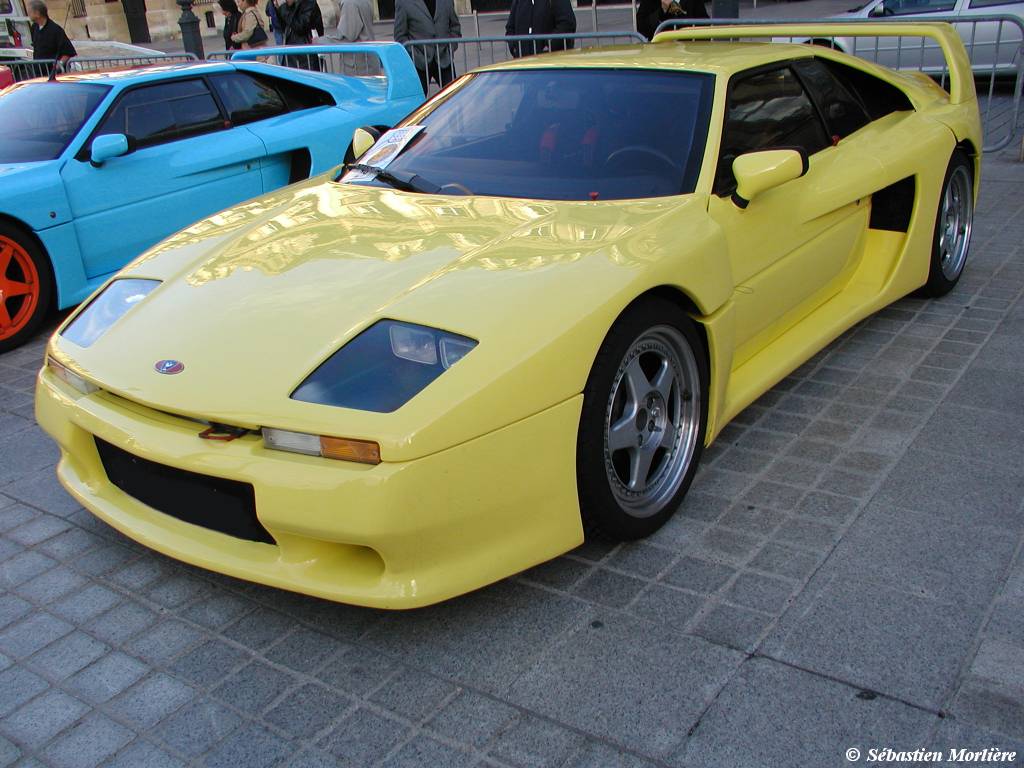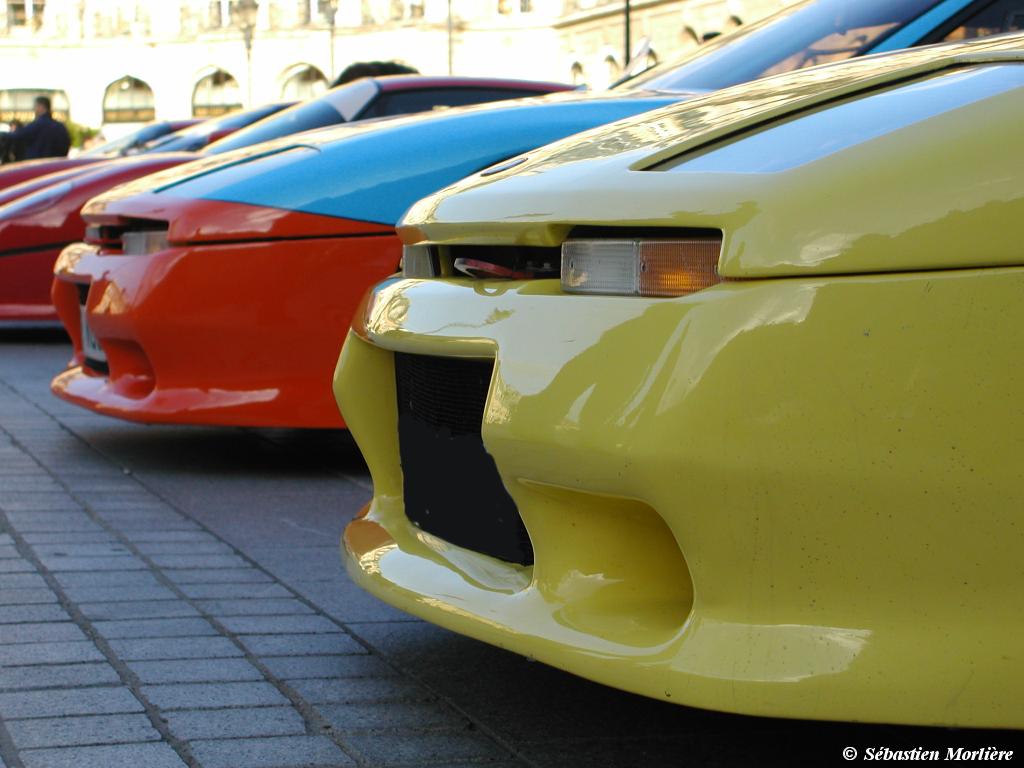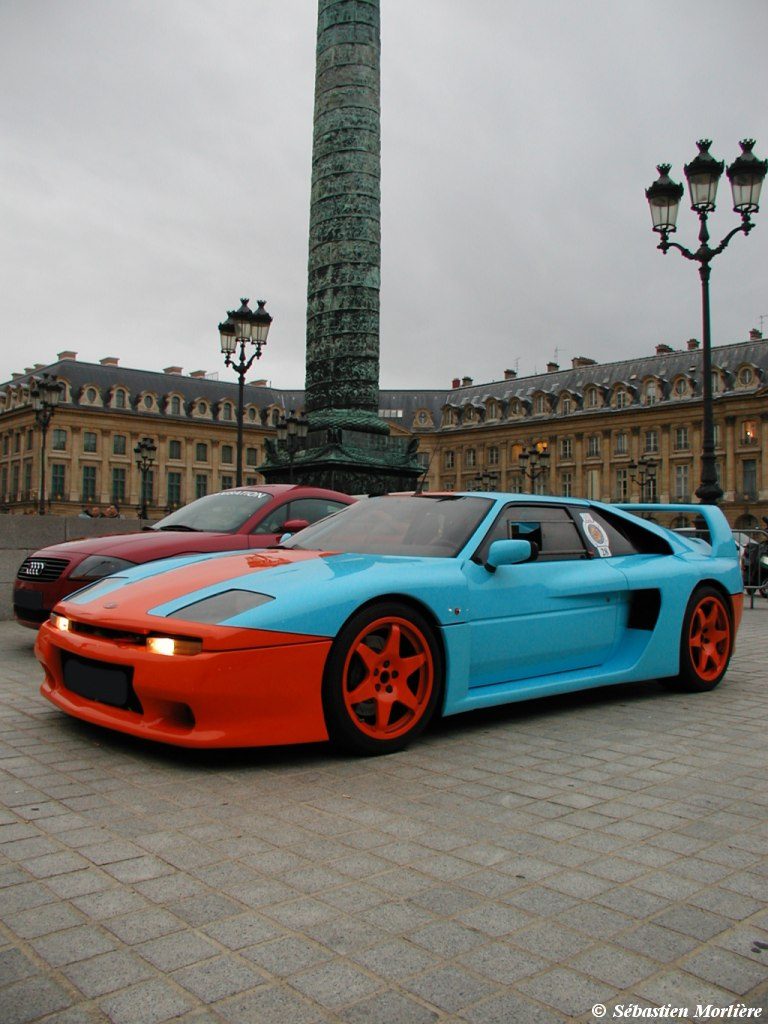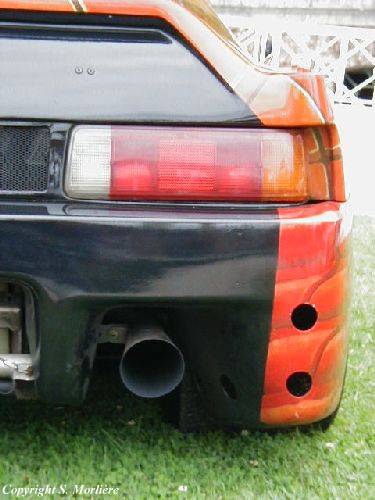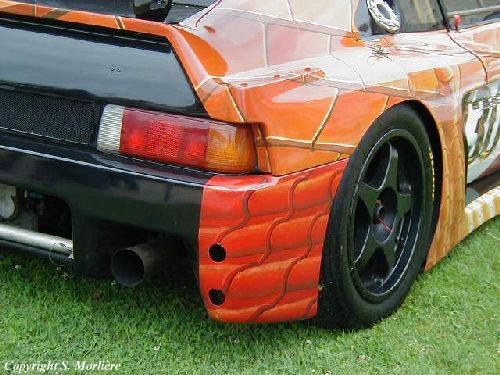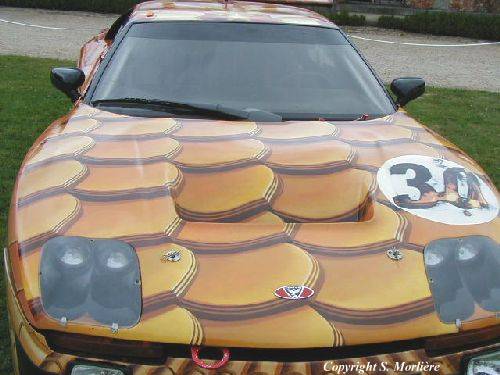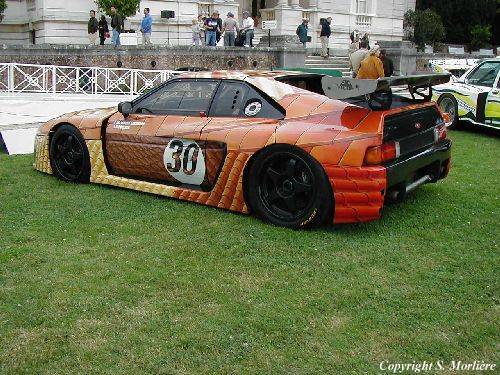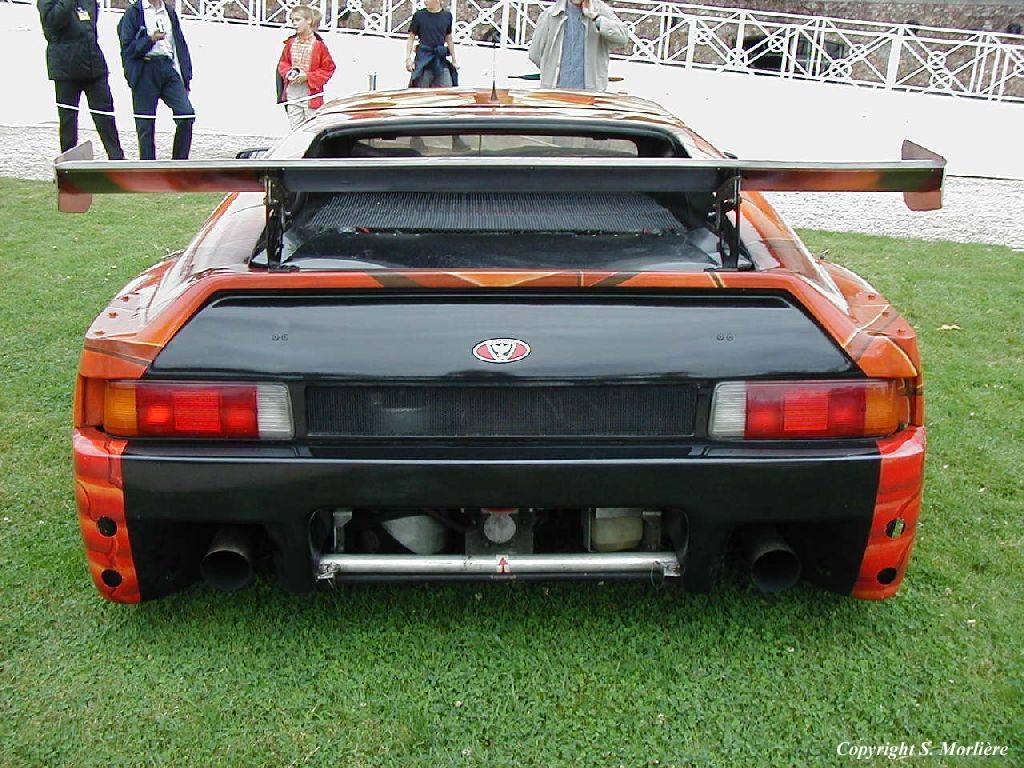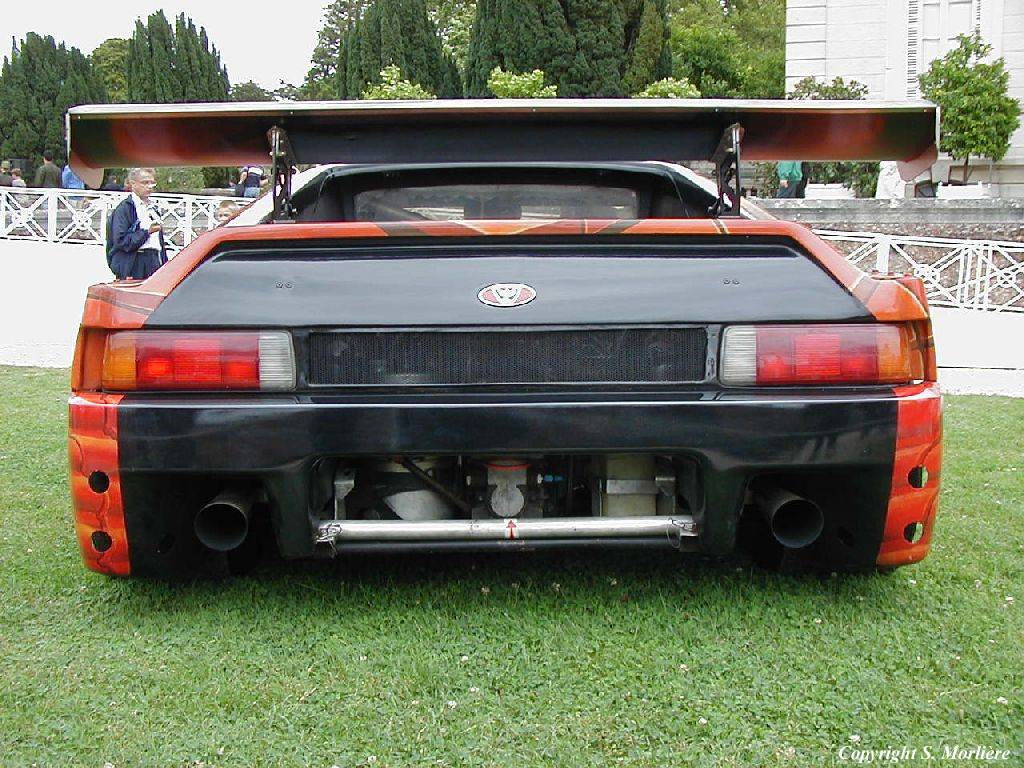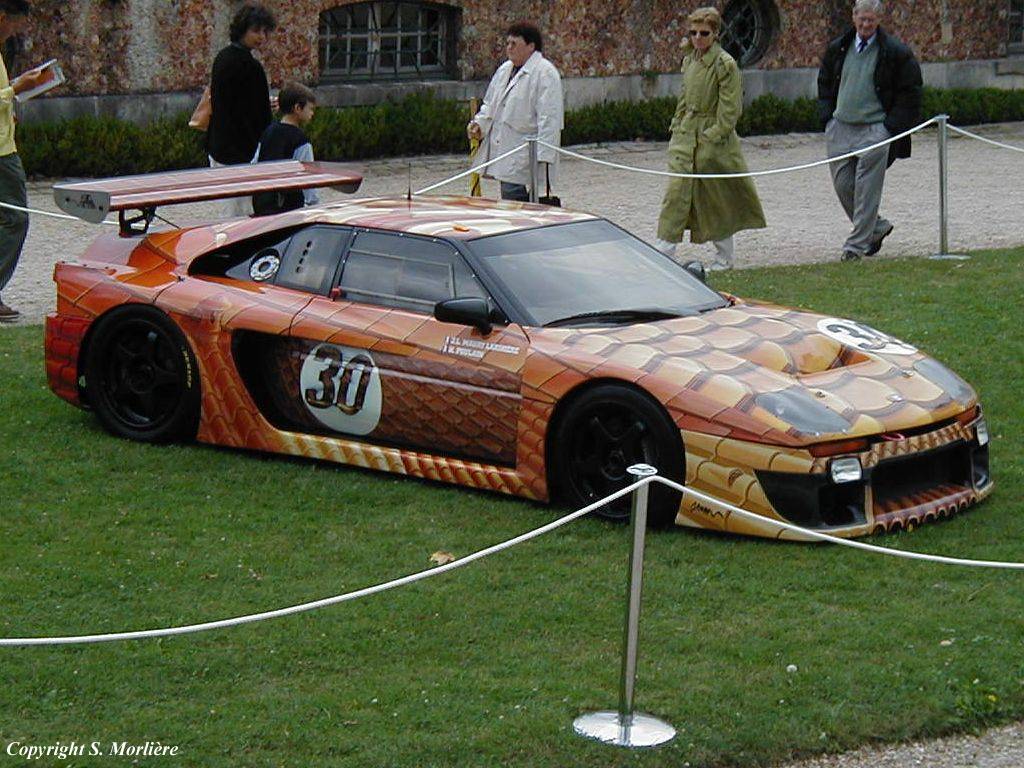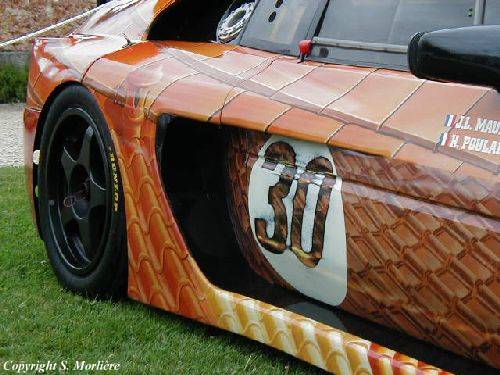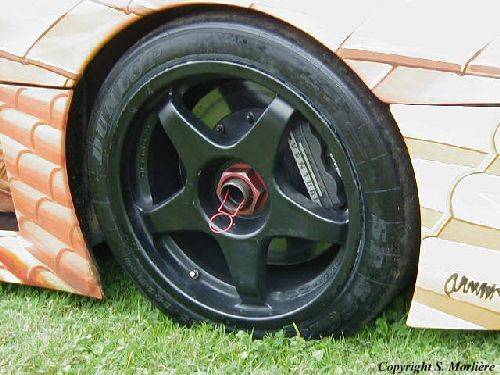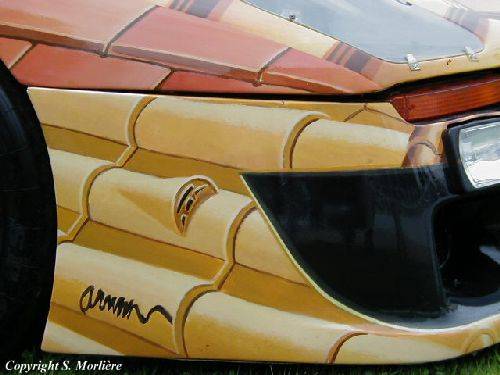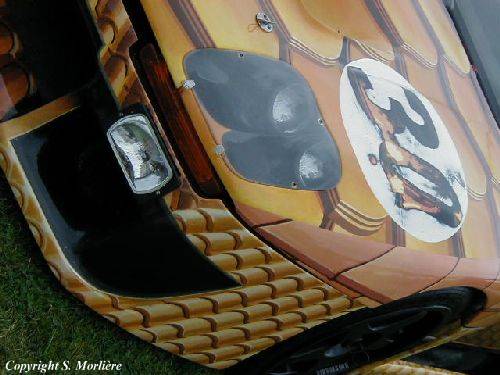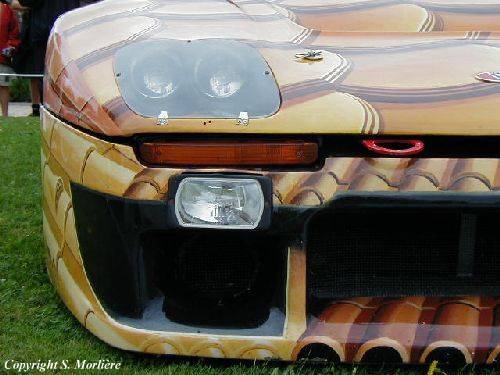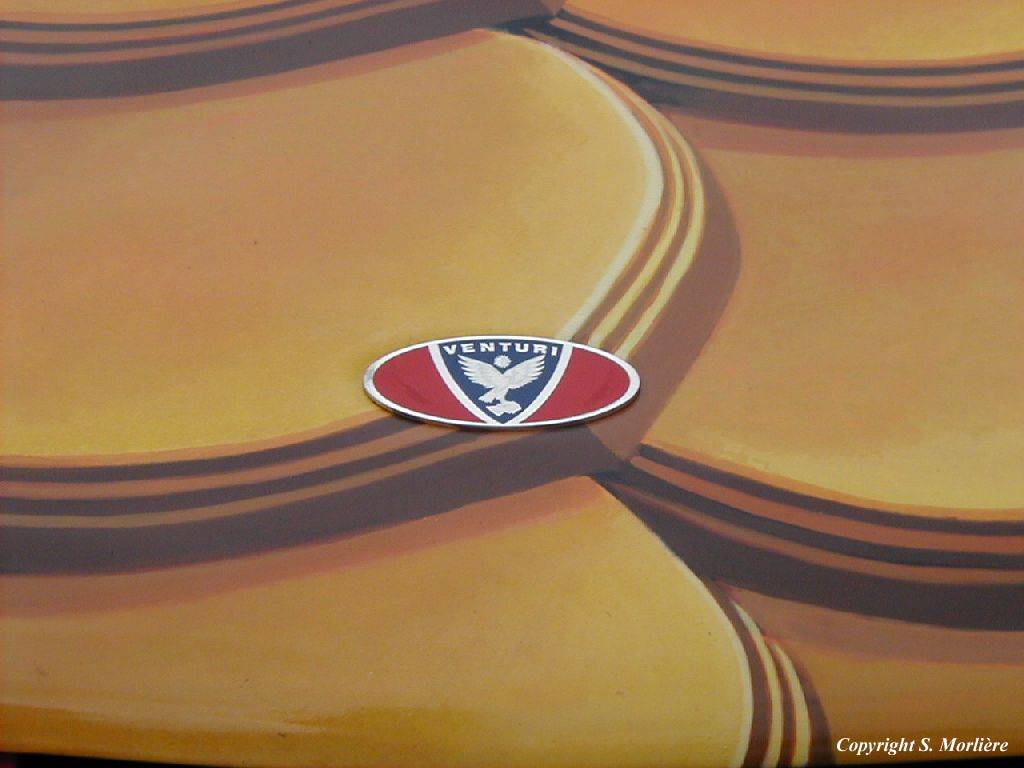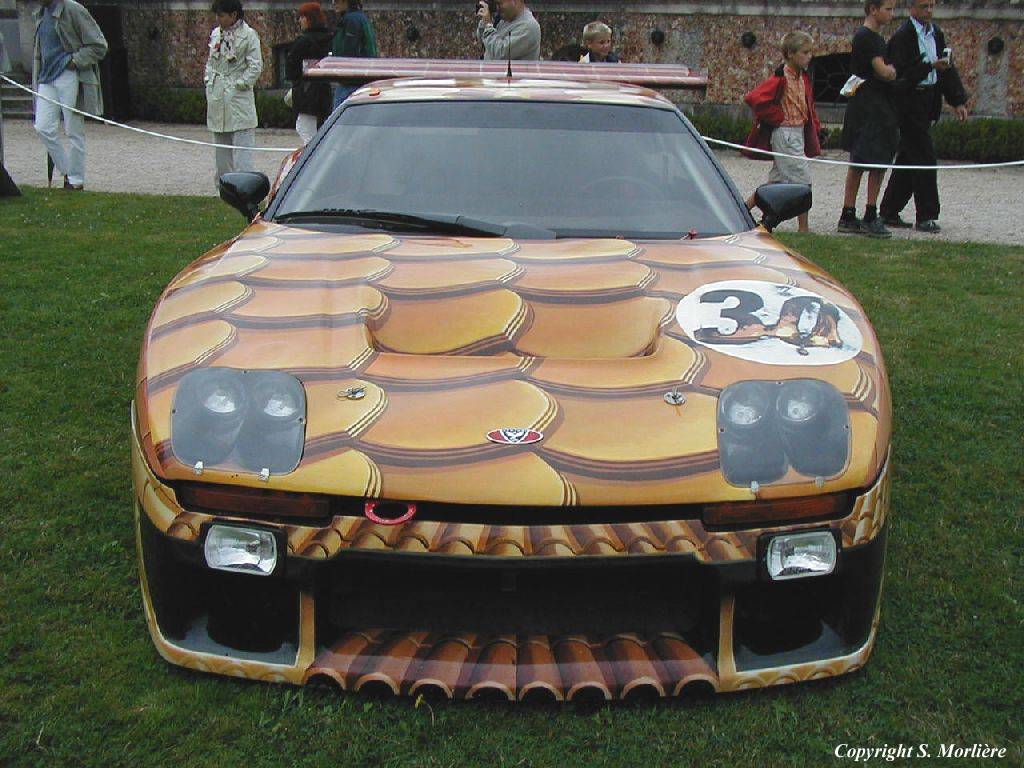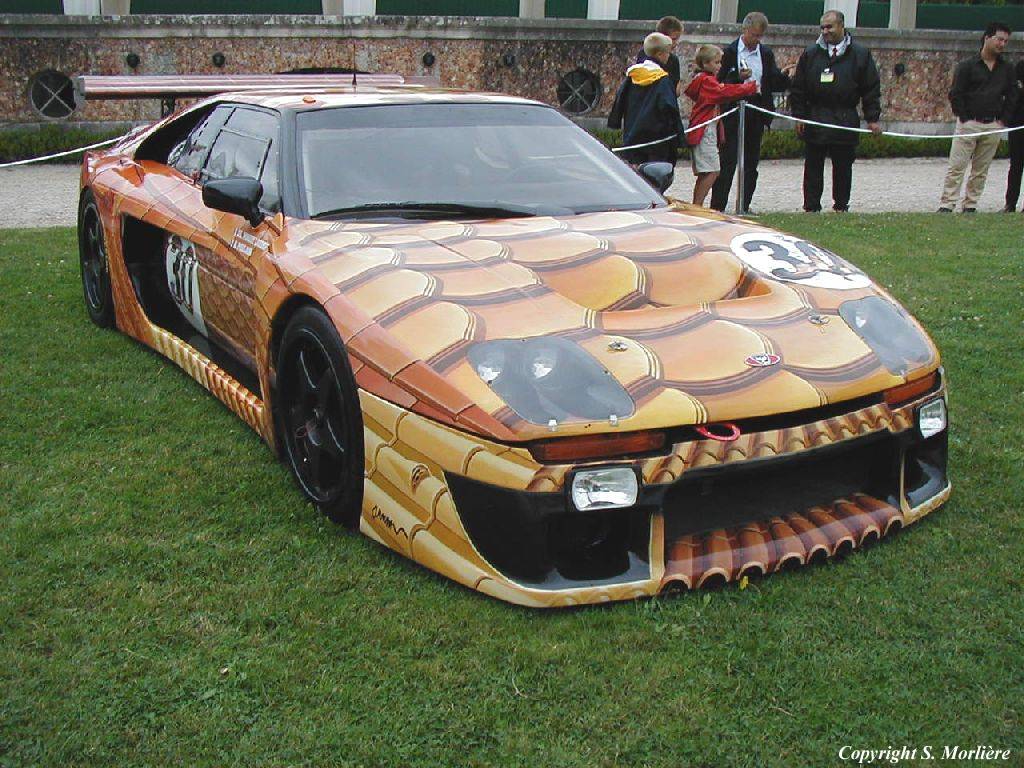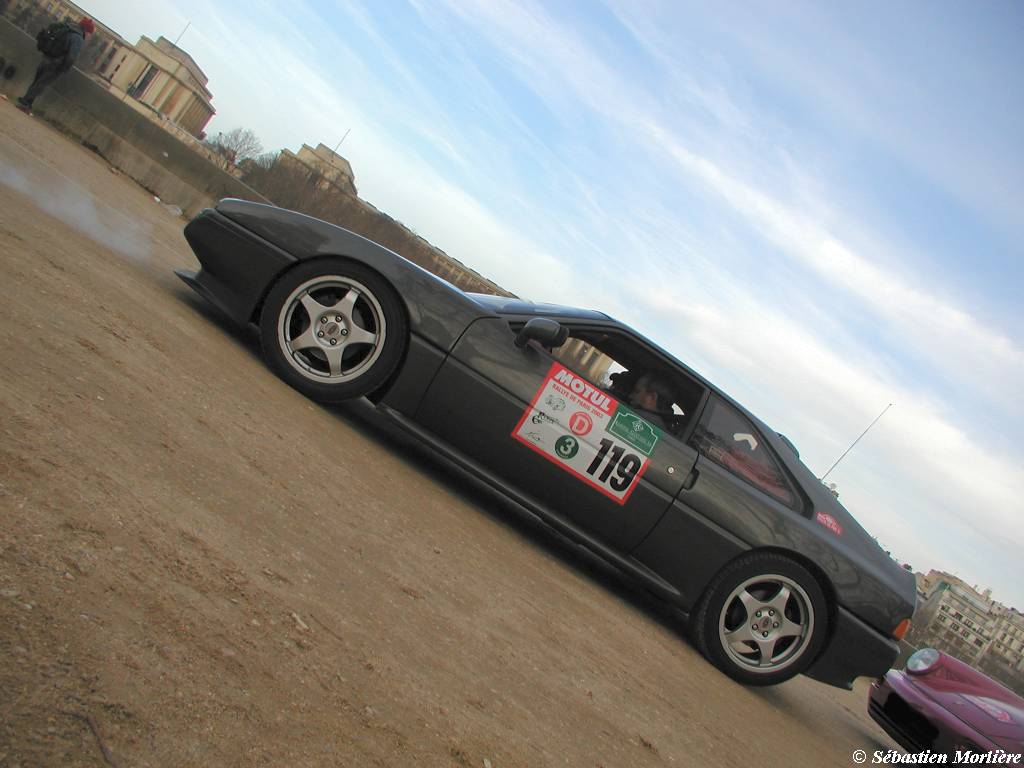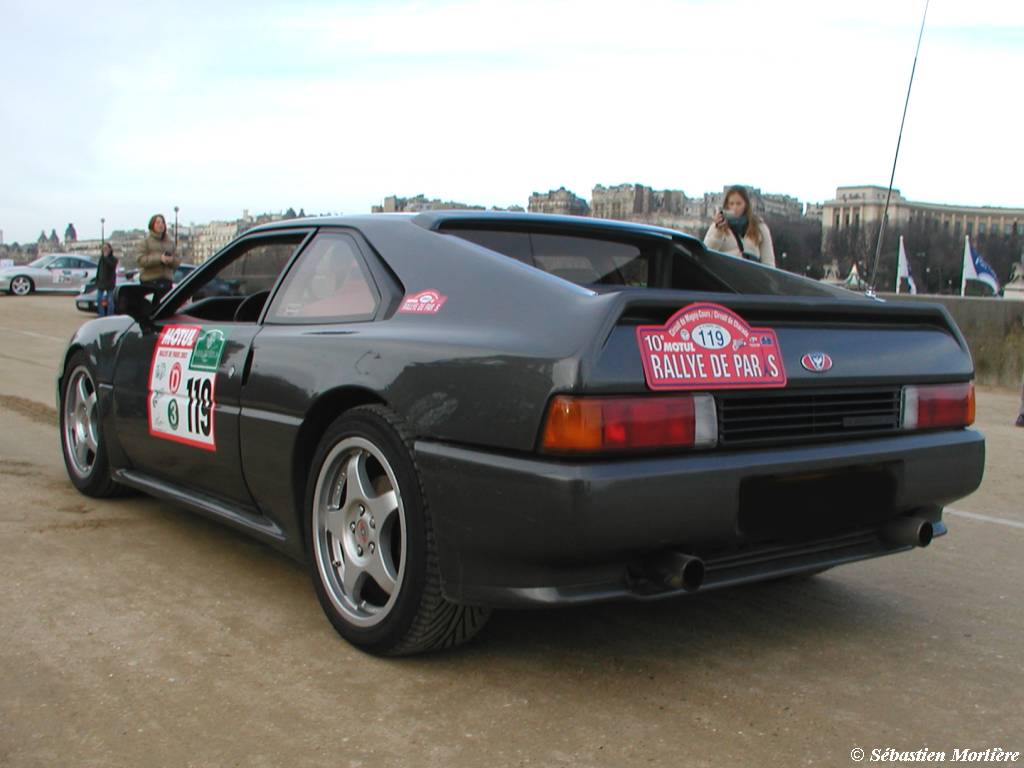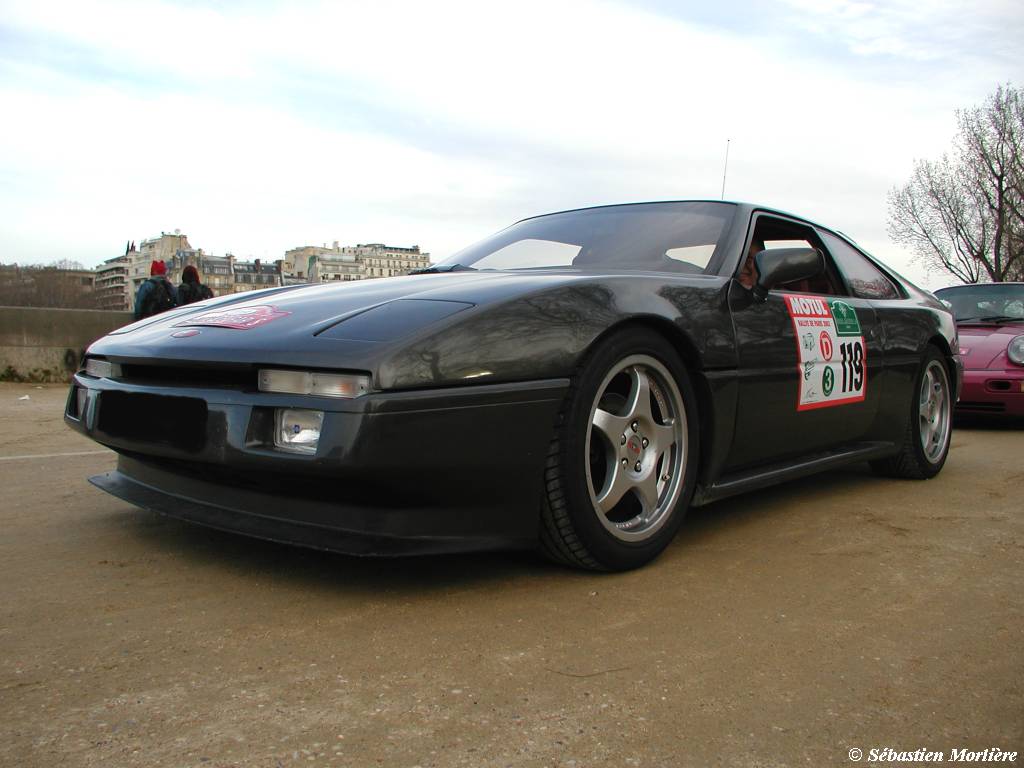- 4,805
Well Venturi is one of my favorite car company and i love their cars so i decide to make a thread about the companys timeline ( Taken from http://www.pistonheads.com/doc.asp?c=103&i=3624)
We look at the history of the little known French Sportscar Manufacturer
Jo Hemelsoet has been doing some digging for us and presents a history of the little known French sports car maker.
1984
Debut
The Venturi story goes back to the 1984 Paris Motor Show where nestling in a corner under an unknown 'Godfroy' banner stood a beautiful coupe. The Ventury (with a 'y') featured a space-frame chassis with Peugeot 205 McPherson suspension, wrapped with a two-tone metallic grey glass-fibre body work. At the rear was a humble 120bhp VW Golf GTI engine. It went down a storm with press and public.
The Ventury was the brainchild of two passionate car designers Gérard Godfroy and Claude Poiraud. Both had been working with the major French car manufacturers and had become colleagues at Heuliez, the design company.
1985
Manufacture
Funds were raised by Hervé Boulan (the future MD) and on 25th September 1985 MVS or Manufacture de Voitures de Sport was founded. Godfroy and Poiraud managed to attract some of the best French designers and technicians and the MVS team settled down in the workshops of 1980 Le Mans winner Jean Rondeau. Rondeau would play an important role in developing the first rolling prototype, before being tragically killed in a road accident in December 1985.
While the body work had been designed from scratch, most other parts were sourced from the mainstream car manufacturers' parts bin: front and side screens from the Renault Fuego, Citroën CX rear view mirrors, Mercedes 190 single arm windscreen wiper, R5 Turbo front blinkers and rear light clusters from the old BMW 3-series.
Because it was MVS' intention to produce a 100% French product an alternative had to be found for the VW engine. Given the mid-mounted architecture and given Boulan's insistance of at least 200 bhp they ended up with the Peugeot 505 turbo engine. Thanks to a Danielson kit this 2.2 litre power plant delivered necessary 200 bhp at 5,700 rpm and delivered 206 lb-ft of torque at 4,000 rpm.
1986
From four to six cylinders
For the development of the preproduction car MVS talked to ex-racing drivers such as Mauro Bianchi and Jean-Pierre Beltoise. Their advice resulted in a new suspension lay-out with double wishbones at the front. Other weak points concerned the brakes and not unimportant, the crude Peugeot engine.
Along the way in developing a more up-market sports car, the unrefined Peugeot four cylinder was dropped in favour of the more refined 2.5 litre V6 from the Renault R25 Turbo. This V6 was itself the remainder of an obsolete V8 project that was killed off by the 1973 fuel crisis; hence its rather unusual - for a V6 that is - 90° layout.
While still developing 200 bhp at 5,750 rpm, maximum torque of 214 lb-ft was now available at only 2,500 rpm. The R25 gearbox was mounted at the very back of the engine, unlike the Alpine with which the MVS shared the engine. The new V6 turbo engined Venturi (by then with final 'i') made its public debut at the 1986 Paris Motor Show. Other updates included a leather interior with wooden dashboard insert, new five spoke alloy wheels and twin tail pipes. At a later stage the single piece engine cover would be replaced with two separate lids, thus creating an engine bay and separate (mini) boot. All these modifications meant that the Venturi had gained weight and its 1,280 kg was 430 kg in excess of the 1984 prototype.
1987
New Factory
The Venturi was now ready for production and this necessitated more space than the corner of the Rondeau workshops. In early 1987 MVS moved towards new premises in Cholet, some 100 miles from the Le Mans circuit.
By June 1987 the first customer could take delivery of his car and production reached four cars a week. The French journalists started to compare the Venturi with the Ferrari 328 and Porsche 911 Carrera, but with an acceleration from 0 to 100 km/h in 6.9 seconds and a top speed of 152mph, the Venturi was still a bit off the pace. Road testers still complained about the harsh ride and the far from perfect road holding. The car also suffered from sudden turbo impact above 3,500 rpm and major turbo lag. But Venturi owners just loved their cars and seemed to be prepared to forgive these 'minor' details. By the end of 1987, 52 cars had been built.
1988
Venturi Transcup
1988 was another Paris Motor Show year and for its third Motor Show, Venturi caused quite a stir. In addition to a new non-turbo V6 coupé with 160 bhp, the real novelty was a brand new convertible, the Transcup. The unique fabric-less hood consisted of a TVR style three piece detachable hood. While both central parts could be taken and stowed away under the front boot lid, the rigid rear panel with glass rear screen would incline and fold away horizontally. Alternatively, the rear section could be left in place to create a Targa. The Transcup was available with both engine options. It was costly to produce though taking 500 hours to build compared to 350 for the coupe.
1989
More Power
Typically of the sports car buying public, Venturi customers called for more power. Though a Lyon dealer had previously offered a kit raising power to 250 bhp, the factory remained indifferent to the customers' demands.
We would have to wait until 1989 for the arrival of the first officially upgraded Venturi: the 2.80 SPC ('sans pot catalytic' - without catalyst). The Renault turbo engine was enlarged to 2,849 cc by EIA who also reworked it from the inside to develop 260 bhp. Even more important, the 2.8 V6 now delivered 296 lb-ft of torque at an incredibly low 1,750 rpm. Externally the SPC could be recognised by its roof spoiler and lowered suspension. Total production of the 2.80 SPC numbered 60 cars, before it was replaced by the 260 APC ('avec pot catalytic'). Power output was identical though at slightly lower revs and smidgen higher.
1990
A new name
In 1990 Venturi benefited from a minor face-lift, consisting of new side sills and a deeper front spoiler. In that year the name MVS was dropped in favour of Venturi and the cars on the Paris Motor Show proudly beared the new company logo: a red oval with a silver grey eagle on a blue background.
1991
New factory
In 1991 Venturi moved once again to new premises, this time to Couëron in the Nantes region and close to the Loire borders. 1991 was the year Alpine launched their new A610 and Porsche their fabulous Carrera RS 3.6.
Venturi's response consisted of the limited edition Atlantique 260, basically a stripped 260 APC. With the air-con, radio and spare wheel trashed and bucket seats and carbon fibre dashboard added, the Atlantique's weight was reduced to just 1,110 kg.
Externally it could be recognised by the lowered suspension, magnesium coloured alloy wheels and distinctive blue body work. Still powered by the 260 bhp 2.8 litre V6 turbo, the Atlantique would accelerate from 0 to 60mph in 5.2 seconds and reach a top speed of 167mph. Only 25 Atlantiques were produced.
Another variations included the Venturi 210 powered by a detuned 2.8 litre V6 turbo and some 2.0 litre cars for the Italian market. These were powered by the Renault 4 cylinder turbo engine of 180 bhp originating from the R21 Turbo.
1992 In 1992 Venturi embarked upon a more aggressive marketing strategy, reflected in an extended motor racing program. This eventually lead to the establishment of a joint Venturi-Larousse F1 race team and the creation of a one-make racing series, the Venturi Trophy.
1993
260LM
From 1993 Venturi focused on the renewed GT championship formulas and developed several 500 bhp and 600 bhp GT racers for the Le Mans 24 hours races.
To celebrate their successful Le Mans debut of 1993, Venturi marketed a limited edition 260 Le Mans. Technically identical to the 260, the 260 LM featured white 17 inch magnesium OZ wheels, while the body work was painted in the colors of the seven Le Mans racers.
In the mean time the Venturi Trophy (later Challenge) had taken off from 1992. The Trophy was a gentlemen drivers arrive and drive championship, at the heart of which was a new purpose-built race car, also named Trophy.
The Trophy's carbon-fibre and Kevlar body work was clearly inspired by the Ferrari F40, though still reminiscent of the original design. The lengthened space-frame chassis had a long wheel base with an extra 10 cm and widened track. The Trophy measured 4.12 metres and 1.95 wide, some 25 centimetres wider than the regular road car.
Venturi summoned EIA once again for the development of a full-race engine. They opted for the new generation 3.0 litre V6 24 valve power plant from the Peugeot 605/Citroën XM. Heavily reworked and with twin turbochargers added, EIA's engine produced a whopping 408 bhp at 6,000 rpm and delivered 383 lb-ft of torque at 4,500 rpm. All this power passed through a limited slip differential to meaty 18 inch wheels shod with 235/40 and 285/35 Michelin MXX road tyres. Exclusive and expensive carbon 330 mm brake discs all round provided stopping power.
1994
The fastest French production car
The Trophy gave birth to a road-going spin-off, the Venturi 400 GT. The latter was officially presented in 1994 by Venturi's new owner, Scotsman Hubert O'Neill who had bought the company in March 1994.
The 400 GT was basically a converted Trophy race car, complete with 407 bhp twin turbo engine, full roll-cage and massive 18 inch wheels. It even inherited the carbon discs, thus becoming the first production car equipped with such brakes. Still the GT's cosy cockpit was clad with 25m² of leather.
No wonder it easily gained awards for the most powerful and quickest French production car ever. In attempt to push the first French road car over 300 km/h, Echappement magazine stranded at 293 km/h (182mph). The 0 to 60mph sprint took 4.6 seconds. Sold at £90,000 the 400 GT's provided an interesting alternative to the Italian supercars of the day.
Atlantique 300 and Biturbo
Atlantique 300
O'Neill would turn out to be an extremely dynamic manager and spurred Venturi into showing a brands new car at the 1994 Paris Motor Show. Designed by founding father Godfroy, the new Atlantique 300 had been developed in a record time of six months. Based on the Trophy's long wheel base, the new body work provided for a logical evolution of the ageing original 1984 concept.
The Atlantique 300 stood on new multi-spoke 17 inch alloys, while the engine and gearbox came from the new 3.0 litre V6 24 valve Peugeot/Citroën units. Both an atmospheric version (of 210 bhp) and a 281 bhp turbocharged version were put on sale.
Coincidentally Venturi presented their new GT when Renault withdrew the Alpine from the market to make way for new Renault Sport products, such as the future Spider. This should have paved the way for a great future but Venturi found itself already in a critical situation.
1996 Too much attention to motor racing, slowing sales figures and subsequent overstaffing had put Venturi into bankruptcy. In May 1996 the Thai group Nakarin Benz took over from O'Neill and a founded a new company: Venturi Paris S.A..
The new owners focused primarly on continuing production of the 400 GT and Atlantique 300.
1998
Atlantique 300 BiTurbo
In 1998 they additionally presented a upgraded version of the Atlantique 300, the Biturbo. Following the Renault Safrane Biturbo, the new Venturi would become the pinnacle of the normal road cars.
Thanks to two small Aerodyne Dallas turbochargers, the 3.0 litre V6 now pumped out 310 bhp. When Performance Car put the Biturbo against the Lotus Esprit V8, they concluded that "it's a more relaxing car to drive, its tidier dimensions make it easier to place, it rides more smoothly, generates far less road noise, and has a much slicker gearchange. It' better built too". Praise indeed.
2000 Unfortunately the Biturbo came too late as it could not prevent Venturi from going bankrupt again in January 2000. Once again a willing new owner was found. In September 2000 Monaco resident Gildo Pallanca Pastor bought the Venturi Paris S.A. assets and part of the production line.
Pastor has the intention to turn the Venturi into an even more exclusive sports car as he foresees an annual production of only fifteen cars. At this rate it will take quite a while before the 1000th Venturi will see the light of day, because so far no more than 700 cars have been built.
Though MVS, Venturi and later Venturi Paris S.A. have been producing Venturis for a mere decade and a half, they have secured their place in the sports car history. Born from the dream of two men, the modest Ventury prototype has evolved into the brutal 400 GT and refined Atlantique 300.
Like many a sports car manufacturer, Venturi's path of life is characterised by joy and despair, success and drama and above all frequent changes in management (many of which have not been dealt with here).
The mad 1992 F1 adventure undoubtedly jeopardised the chances of a sound future. But the most important reason for Venturi's bad luck have been the slowing sales figures, explicable by the Couëron's company history - or rather its lack of history. For anyone challenging Stuttgart's or Modena's finest needs a thorough pedigree and proven track record in order to attract more than just the odd individualist looking for an exclusive sports car.
Today Let's hope the Monaco built Venturis will take the brilliant GTs far into this century.
We look at the history of the little known French Sportscar Manufacturer
Jo Hemelsoet has been doing some digging for us and presents a history of the little known French sports car maker.
1984
Debut
The Venturi story goes back to the 1984 Paris Motor Show where nestling in a corner under an unknown 'Godfroy' banner stood a beautiful coupe. The Ventury (with a 'y') featured a space-frame chassis with Peugeot 205 McPherson suspension, wrapped with a two-tone metallic grey glass-fibre body work. At the rear was a humble 120bhp VW Golf GTI engine. It went down a storm with press and public.
The Ventury was the brainchild of two passionate car designers Gérard Godfroy and Claude Poiraud. Both had been working with the major French car manufacturers and had become colleagues at Heuliez, the design company.
1985
Manufacture
Funds were raised by Hervé Boulan (the future MD) and on 25th September 1985 MVS or Manufacture de Voitures de Sport was founded. Godfroy and Poiraud managed to attract some of the best French designers and technicians and the MVS team settled down in the workshops of 1980 Le Mans winner Jean Rondeau. Rondeau would play an important role in developing the first rolling prototype, before being tragically killed in a road accident in December 1985.
While the body work had been designed from scratch, most other parts were sourced from the mainstream car manufacturers' parts bin: front and side screens from the Renault Fuego, Citroën CX rear view mirrors, Mercedes 190 single arm windscreen wiper, R5 Turbo front blinkers and rear light clusters from the old BMW 3-series.
Because it was MVS' intention to produce a 100% French product an alternative had to be found for the VW engine. Given the mid-mounted architecture and given Boulan's insistance of at least 200 bhp they ended up with the Peugeot 505 turbo engine. Thanks to a Danielson kit this 2.2 litre power plant delivered necessary 200 bhp at 5,700 rpm and delivered 206 lb-ft of torque at 4,000 rpm.
1986
From four to six cylinders
For the development of the preproduction car MVS talked to ex-racing drivers such as Mauro Bianchi and Jean-Pierre Beltoise. Their advice resulted in a new suspension lay-out with double wishbones at the front. Other weak points concerned the brakes and not unimportant, the crude Peugeot engine.
Along the way in developing a more up-market sports car, the unrefined Peugeot four cylinder was dropped in favour of the more refined 2.5 litre V6 from the Renault R25 Turbo. This V6 was itself the remainder of an obsolete V8 project that was killed off by the 1973 fuel crisis; hence its rather unusual - for a V6 that is - 90° layout.
While still developing 200 bhp at 5,750 rpm, maximum torque of 214 lb-ft was now available at only 2,500 rpm. The R25 gearbox was mounted at the very back of the engine, unlike the Alpine with which the MVS shared the engine. The new V6 turbo engined Venturi (by then with final 'i') made its public debut at the 1986 Paris Motor Show. Other updates included a leather interior with wooden dashboard insert, new five spoke alloy wheels and twin tail pipes. At a later stage the single piece engine cover would be replaced with two separate lids, thus creating an engine bay and separate (mini) boot. All these modifications meant that the Venturi had gained weight and its 1,280 kg was 430 kg in excess of the 1984 prototype.
1987
New Factory
The Venturi was now ready for production and this necessitated more space than the corner of the Rondeau workshops. In early 1987 MVS moved towards new premises in Cholet, some 100 miles from the Le Mans circuit.
By June 1987 the first customer could take delivery of his car and production reached four cars a week. The French journalists started to compare the Venturi with the Ferrari 328 and Porsche 911 Carrera, but with an acceleration from 0 to 100 km/h in 6.9 seconds and a top speed of 152mph, the Venturi was still a bit off the pace. Road testers still complained about the harsh ride and the far from perfect road holding. The car also suffered from sudden turbo impact above 3,500 rpm and major turbo lag. But Venturi owners just loved their cars and seemed to be prepared to forgive these 'minor' details. By the end of 1987, 52 cars had been built.
1988
Venturi Transcup
1988 was another Paris Motor Show year and for its third Motor Show, Venturi caused quite a stir. In addition to a new non-turbo V6 coupé with 160 bhp, the real novelty was a brand new convertible, the Transcup. The unique fabric-less hood consisted of a TVR style three piece detachable hood. While both central parts could be taken and stowed away under the front boot lid, the rigid rear panel with glass rear screen would incline and fold away horizontally. Alternatively, the rear section could be left in place to create a Targa. The Transcup was available with both engine options. It was costly to produce though taking 500 hours to build compared to 350 for the coupe.
1989
More Power
Typically of the sports car buying public, Venturi customers called for more power. Though a Lyon dealer had previously offered a kit raising power to 250 bhp, the factory remained indifferent to the customers' demands.
We would have to wait until 1989 for the arrival of the first officially upgraded Venturi: the 2.80 SPC ('sans pot catalytic' - without catalyst). The Renault turbo engine was enlarged to 2,849 cc by EIA who also reworked it from the inside to develop 260 bhp. Even more important, the 2.8 V6 now delivered 296 lb-ft of torque at an incredibly low 1,750 rpm. Externally the SPC could be recognised by its roof spoiler and lowered suspension. Total production of the 2.80 SPC numbered 60 cars, before it was replaced by the 260 APC ('avec pot catalytic'). Power output was identical though at slightly lower revs and smidgen higher.
1990
A new name
In 1990 Venturi benefited from a minor face-lift, consisting of new side sills and a deeper front spoiler. In that year the name MVS was dropped in favour of Venturi and the cars on the Paris Motor Show proudly beared the new company logo: a red oval with a silver grey eagle on a blue background.
1991
New factory
In 1991 Venturi moved once again to new premises, this time to Couëron in the Nantes region and close to the Loire borders. 1991 was the year Alpine launched their new A610 and Porsche their fabulous Carrera RS 3.6.
Venturi's response consisted of the limited edition Atlantique 260, basically a stripped 260 APC. With the air-con, radio and spare wheel trashed and bucket seats and carbon fibre dashboard added, the Atlantique's weight was reduced to just 1,110 kg.
Externally it could be recognised by the lowered suspension, magnesium coloured alloy wheels and distinctive blue body work. Still powered by the 260 bhp 2.8 litre V6 turbo, the Atlantique would accelerate from 0 to 60mph in 5.2 seconds and reach a top speed of 167mph. Only 25 Atlantiques were produced.
Another variations included the Venturi 210 powered by a detuned 2.8 litre V6 turbo and some 2.0 litre cars for the Italian market. These were powered by the Renault 4 cylinder turbo engine of 180 bhp originating from the R21 Turbo.
1992 In 1992 Venturi embarked upon a more aggressive marketing strategy, reflected in an extended motor racing program. This eventually lead to the establishment of a joint Venturi-Larousse F1 race team and the creation of a one-make racing series, the Venturi Trophy.
1993
260LM
From 1993 Venturi focused on the renewed GT championship formulas and developed several 500 bhp and 600 bhp GT racers for the Le Mans 24 hours races.
To celebrate their successful Le Mans debut of 1993, Venturi marketed a limited edition 260 Le Mans. Technically identical to the 260, the 260 LM featured white 17 inch magnesium OZ wheels, while the body work was painted in the colors of the seven Le Mans racers.
In the mean time the Venturi Trophy (later Challenge) had taken off from 1992. The Trophy was a gentlemen drivers arrive and drive championship, at the heart of which was a new purpose-built race car, also named Trophy.
The Trophy's carbon-fibre and Kevlar body work was clearly inspired by the Ferrari F40, though still reminiscent of the original design. The lengthened space-frame chassis had a long wheel base with an extra 10 cm and widened track. The Trophy measured 4.12 metres and 1.95 wide, some 25 centimetres wider than the regular road car.
Venturi summoned EIA once again for the development of a full-race engine. They opted for the new generation 3.0 litre V6 24 valve power plant from the Peugeot 605/Citroën XM. Heavily reworked and with twin turbochargers added, EIA's engine produced a whopping 408 bhp at 6,000 rpm and delivered 383 lb-ft of torque at 4,500 rpm. All this power passed through a limited slip differential to meaty 18 inch wheels shod with 235/40 and 285/35 Michelin MXX road tyres. Exclusive and expensive carbon 330 mm brake discs all round provided stopping power.
1994
The fastest French production car
The Trophy gave birth to a road-going spin-off, the Venturi 400 GT. The latter was officially presented in 1994 by Venturi's new owner, Scotsman Hubert O'Neill who had bought the company in March 1994.
The 400 GT was basically a converted Trophy race car, complete with 407 bhp twin turbo engine, full roll-cage and massive 18 inch wheels. It even inherited the carbon discs, thus becoming the first production car equipped with such brakes. Still the GT's cosy cockpit was clad with 25m² of leather.
No wonder it easily gained awards for the most powerful and quickest French production car ever. In attempt to push the first French road car over 300 km/h, Echappement magazine stranded at 293 km/h (182mph). The 0 to 60mph sprint took 4.6 seconds. Sold at £90,000 the 400 GT's provided an interesting alternative to the Italian supercars of the day.
Atlantique 300 and Biturbo
Atlantique 300
O'Neill would turn out to be an extremely dynamic manager and spurred Venturi into showing a brands new car at the 1994 Paris Motor Show. Designed by founding father Godfroy, the new Atlantique 300 had been developed in a record time of six months. Based on the Trophy's long wheel base, the new body work provided for a logical evolution of the ageing original 1984 concept.
The Atlantique 300 stood on new multi-spoke 17 inch alloys, while the engine and gearbox came from the new 3.0 litre V6 24 valve Peugeot/Citroën units. Both an atmospheric version (of 210 bhp) and a 281 bhp turbocharged version were put on sale.
Coincidentally Venturi presented their new GT when Renault withdrew the Alpine from the market to make way for new Renault Sport products, such as the future Spider. This should have paved the way for a great future but Venturi found itself already in a critical situation.
1996 Too much attention to motor racing, slowing sales figures and subsequent overstaffing had put Venturi into bankruptcy. In May 1996 the Thai group Nakarin Benz took over from O'Neill and a founded a new company: Venturi Paris S.A..
The new owners focused primarly on continuing production of the 400 GT and Atlantique 300.
1998
Atlantique 300 BiTurbo
In 1998 they additionally presented a upgraded version of the Atlantique 300, the Biturbo. Following the Renault Safrane Biturbo, the new Venturi would become the pinnacle of the normal road cars.
Thanks to two small Aerodyne Dallas turbochargers, the 3.0 litre V6 now pumped out 310 bhp. When Performance Car put the Biturbo against the Lotus Esprit V8, they concluded that "it's a more relaxing car to drive, its tidier dimensions make it easier to place, it rides more smoothly, generates far less road noise, and has a much slicker gearchange. It' better built too". Praise indeed.
2000 Unfortunately the Biturbo came too late as it could not prevent Venturi from going bankrupt again in January 2000. Once again a willing new owner was found. In September 2000 Monaco resident Gildo Pallanca Pastor bought the Venturi Paris S.A. assets and part of the production line.
Pastor has the intention to turn the Venturi into an even more exclusive sports car as he foresees an annual production of only fifteen cars. At this rate it will take quite a while before the 1000th Venturi will see the light of day, because so far no more than 700 cars have been built.
Though MVS, Venturi and later Venturi Paris S.A. have been producing Venturis for a mere decade and a half, they have secured their place in the sports car history. Born from the dream of two men, the modest Ventury prototype has evolved into the brutal 400 GT and refined Atlantique 300.
Like many a sports car manufacturer, Venturi's path of life is characterised by joy and despair, success and drama and above all frequent changes in management (many of which have not been dealt with here).
The mad 1992 F1 adventure undoubtedly jeopardised the chances of a sound future. But the most important reason for Venturi's bad luck have been the slowing sales figures, explicable by the Couëron's company history - or rather its lack of history. For anyone challenging Stuttgart's or Modena's finest needs a thorough pedigree and proven track record in order to attract more than just the odd individualist looking for an exclusive sports car.
Today Let's hope the Monaco built Venturis will take the brilliant GTs far into this century.


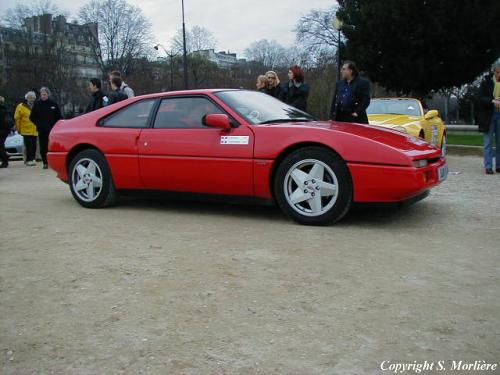
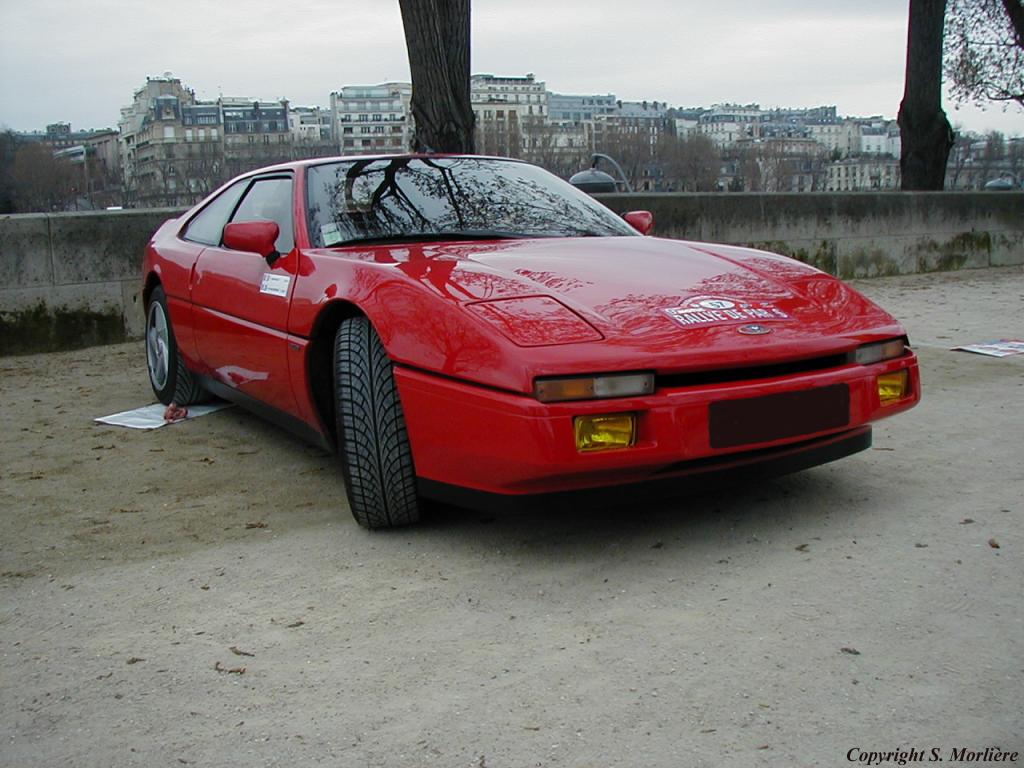
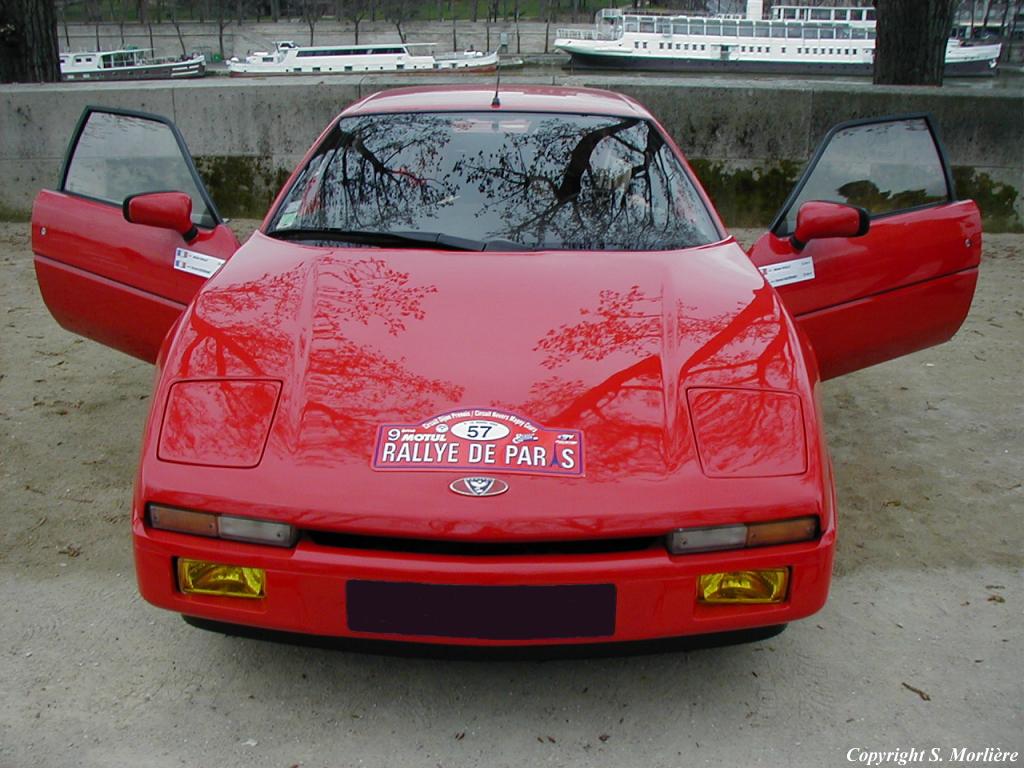

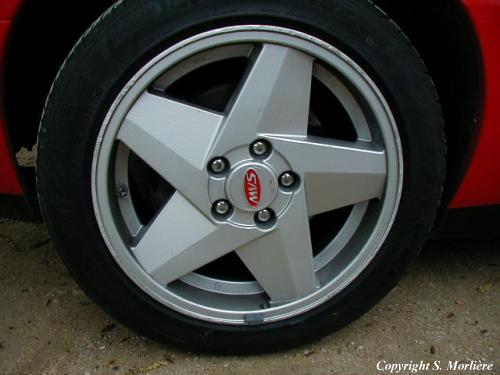

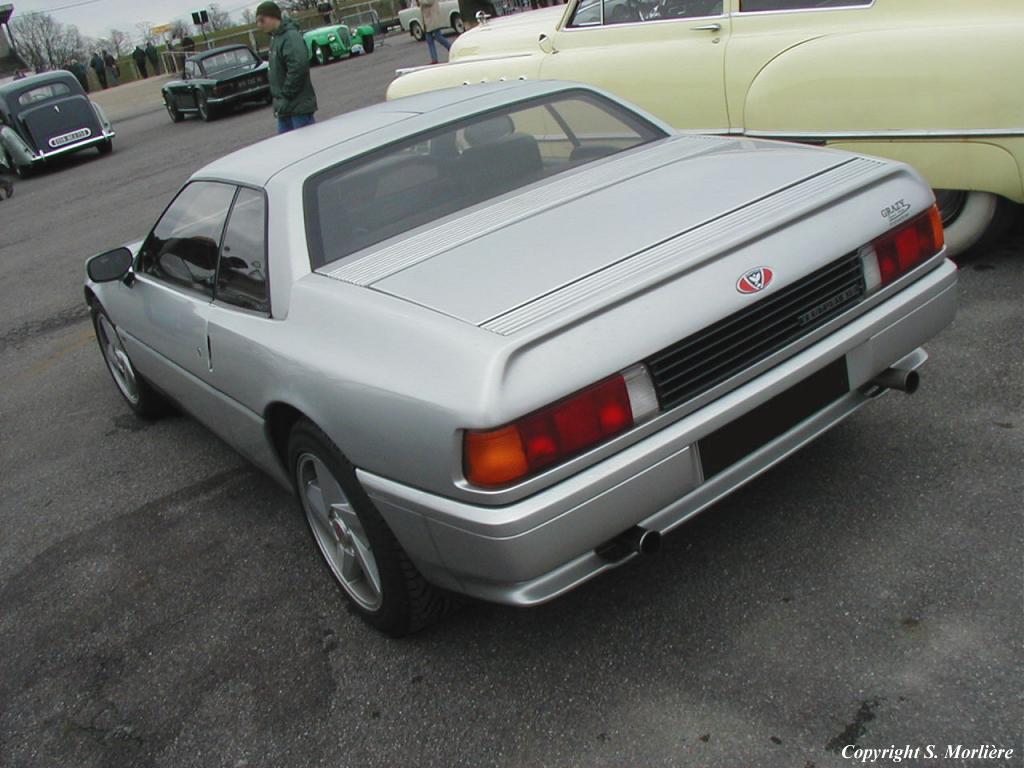
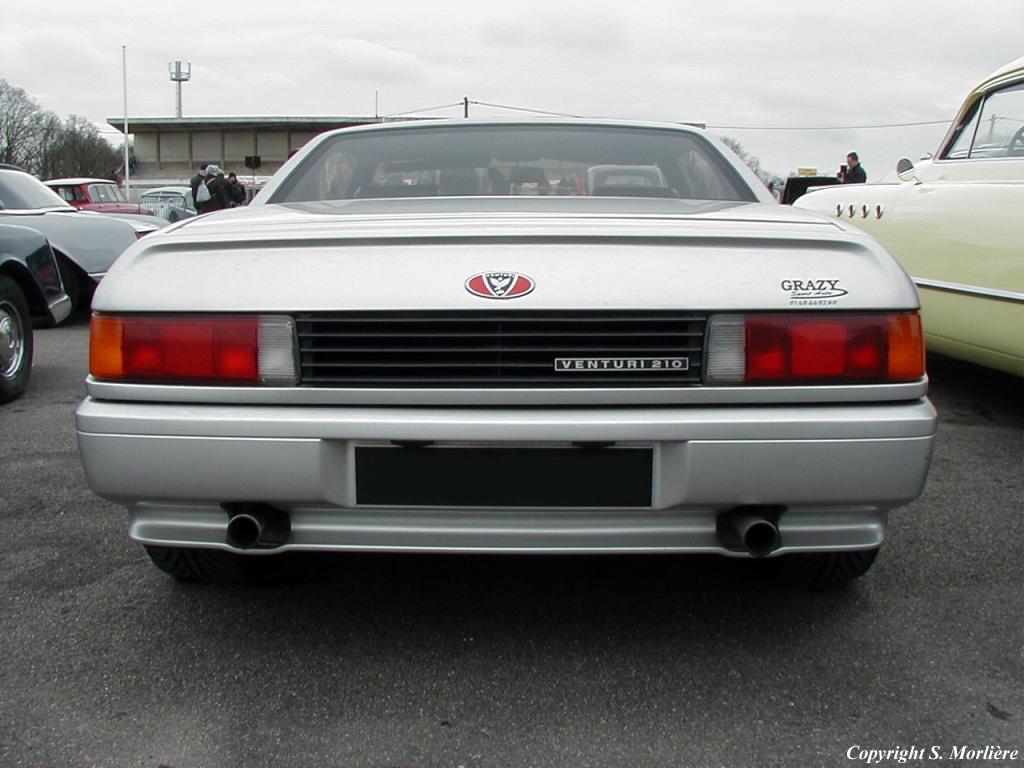
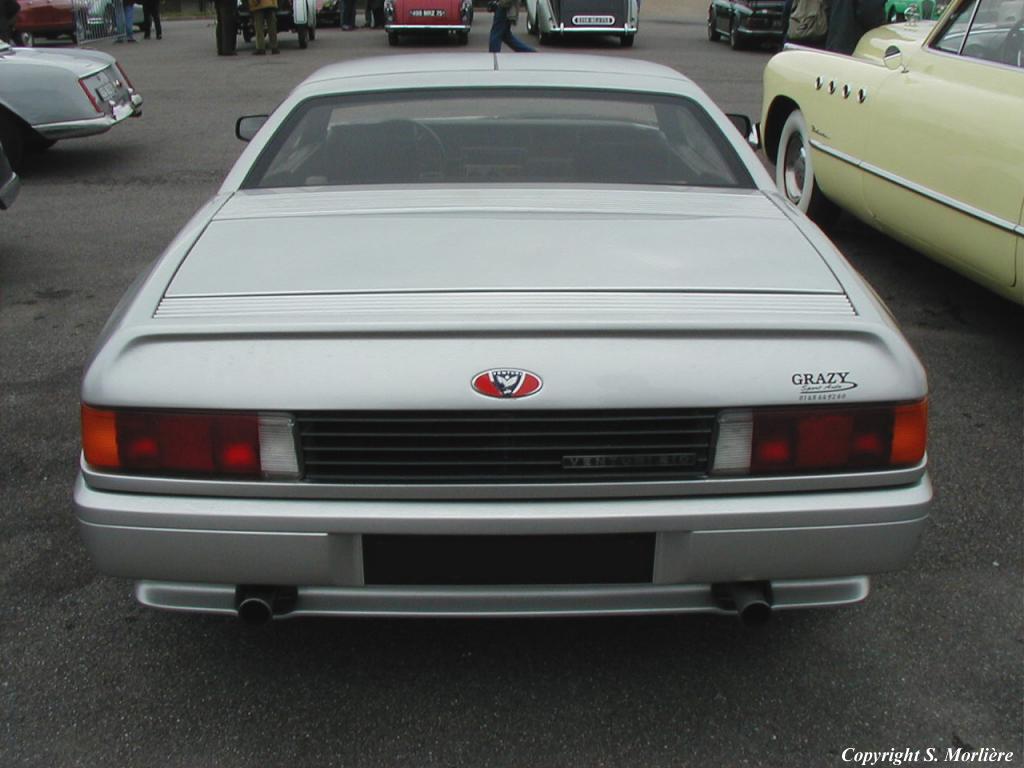
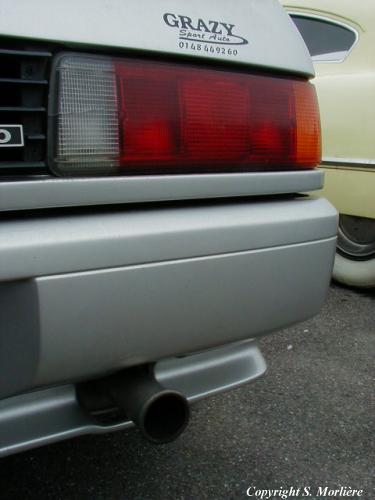

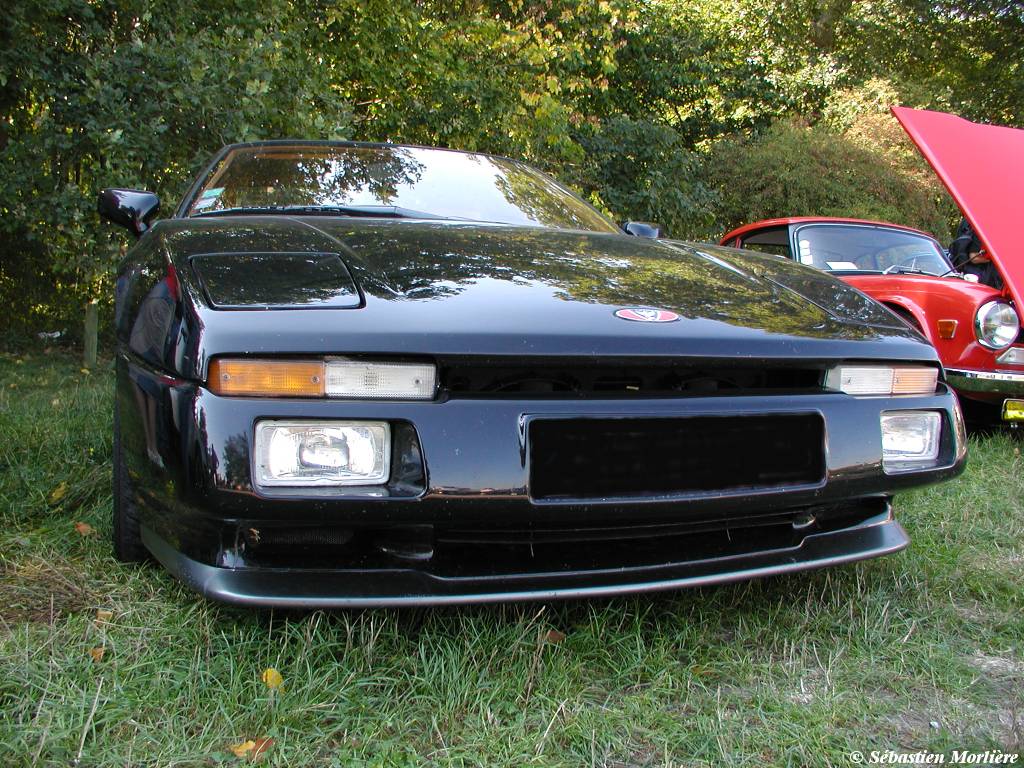
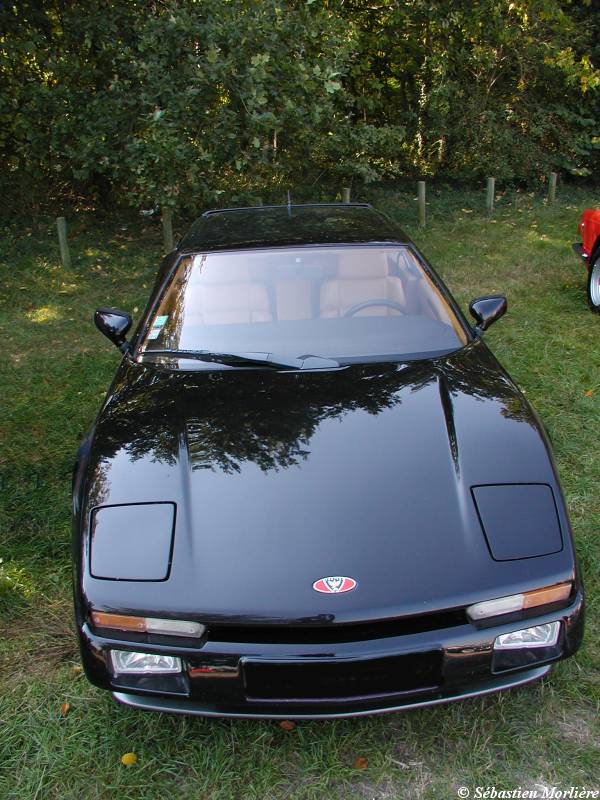

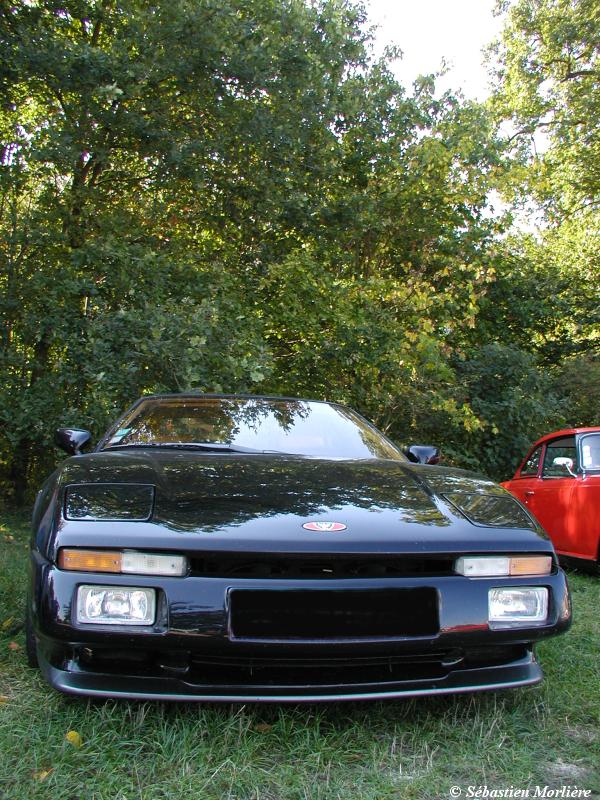
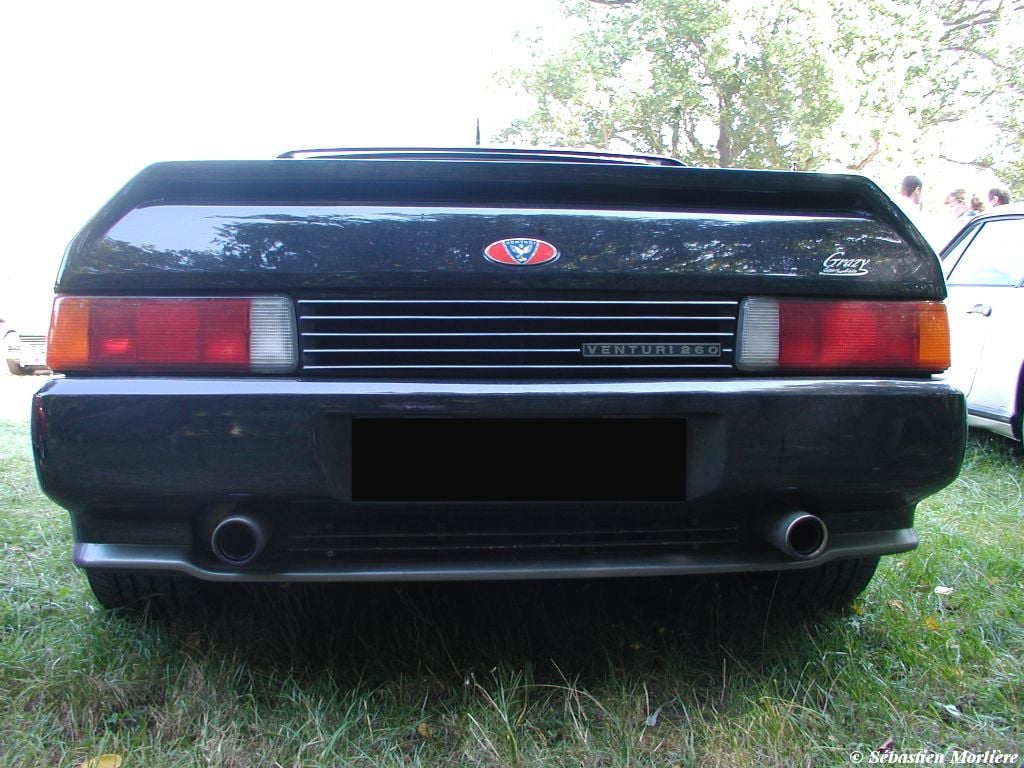
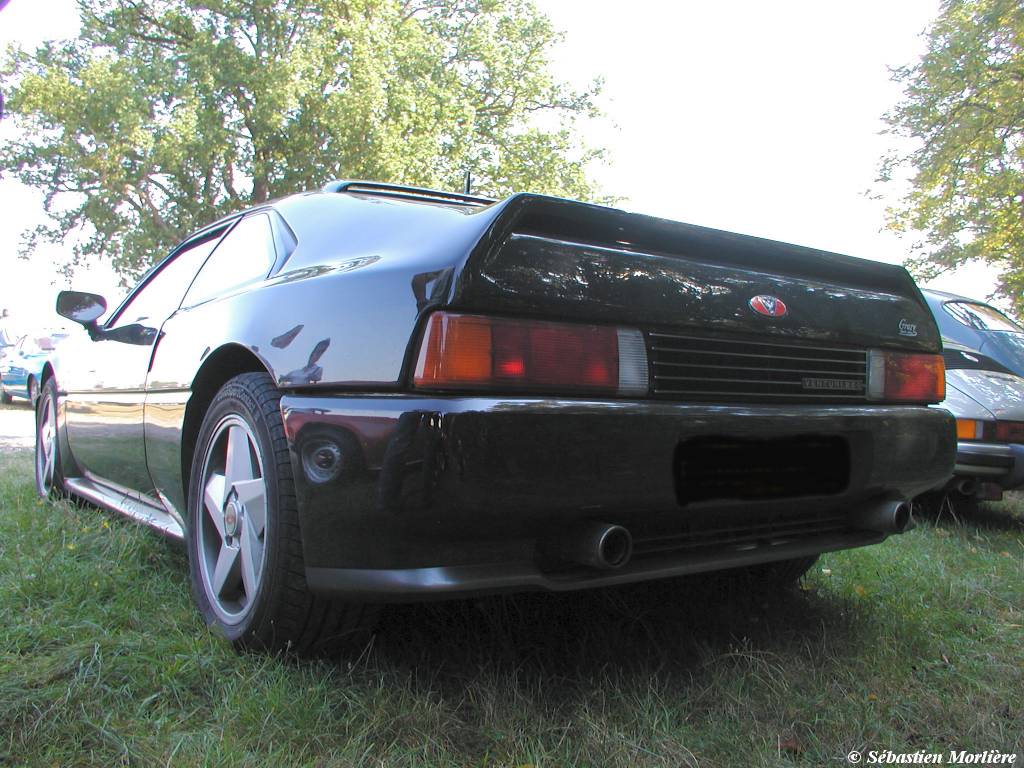
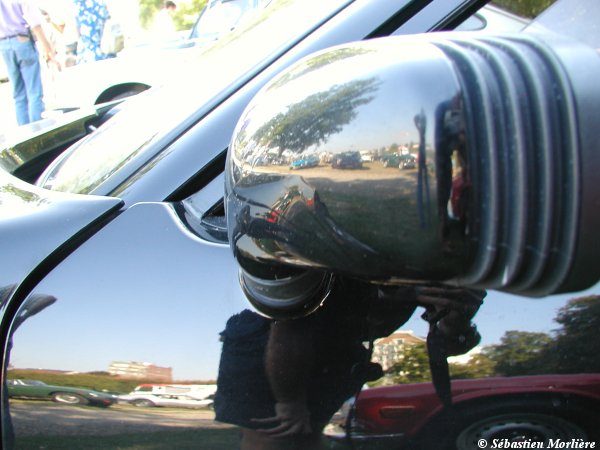

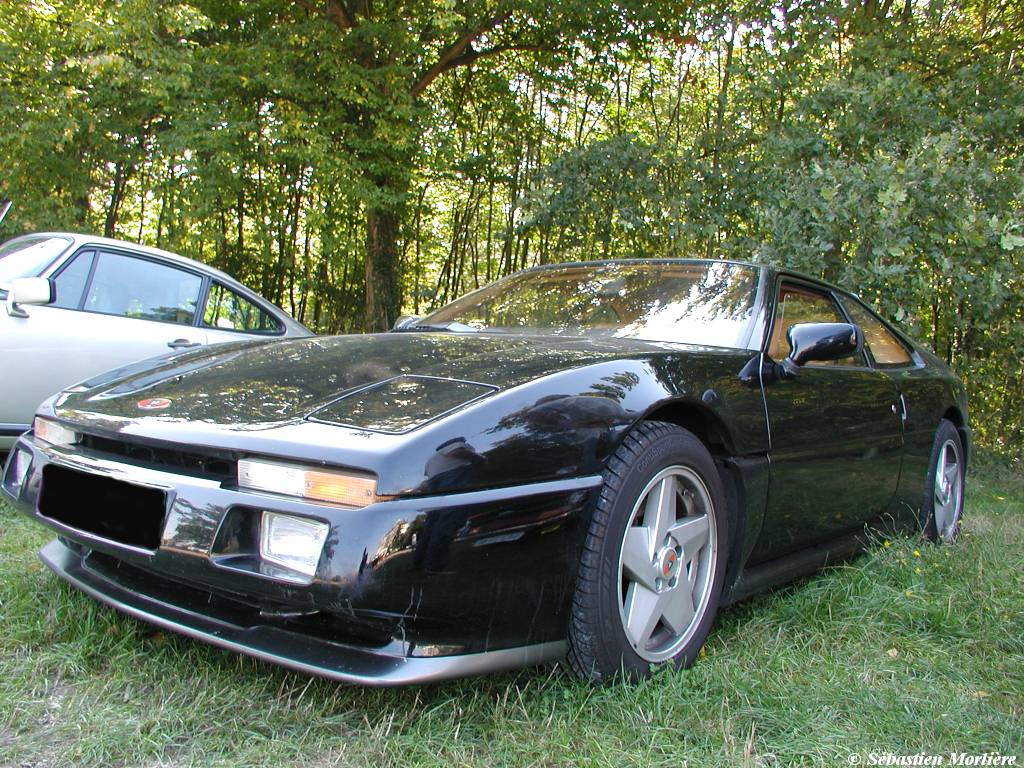
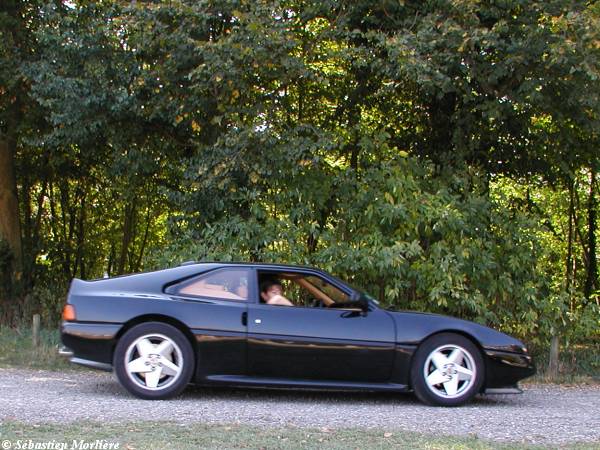
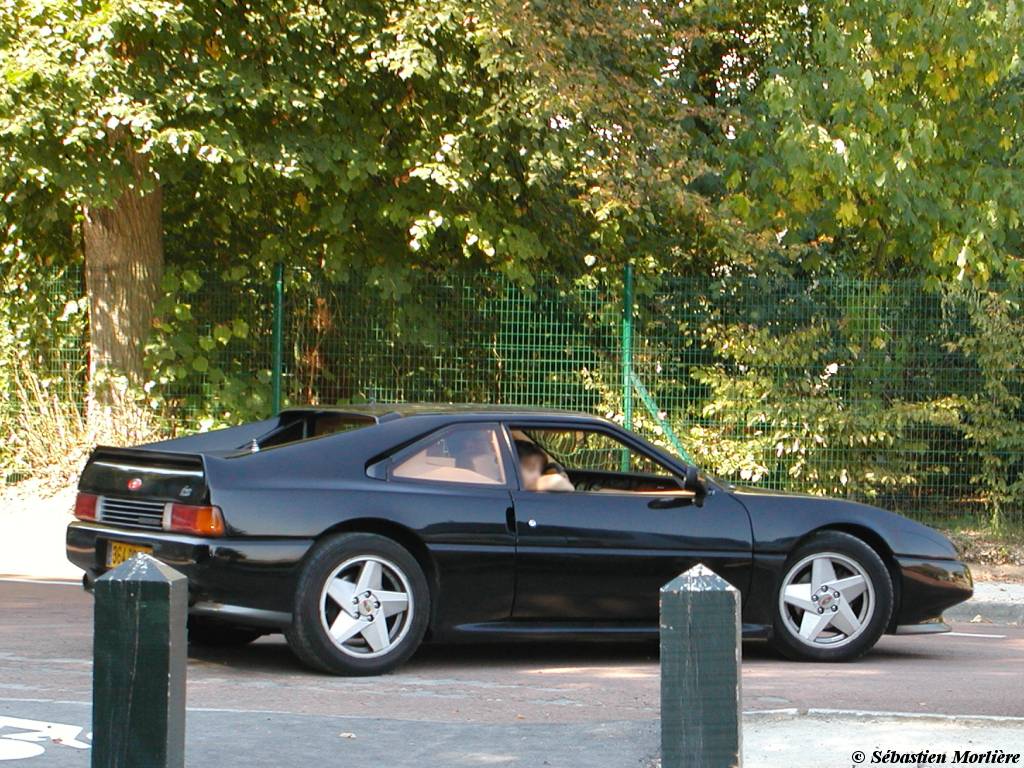
 (I am not sure but i thought this car was produced between 1994-1995
(I am not sure but i thought this car was produced between 1994-1995 )
)